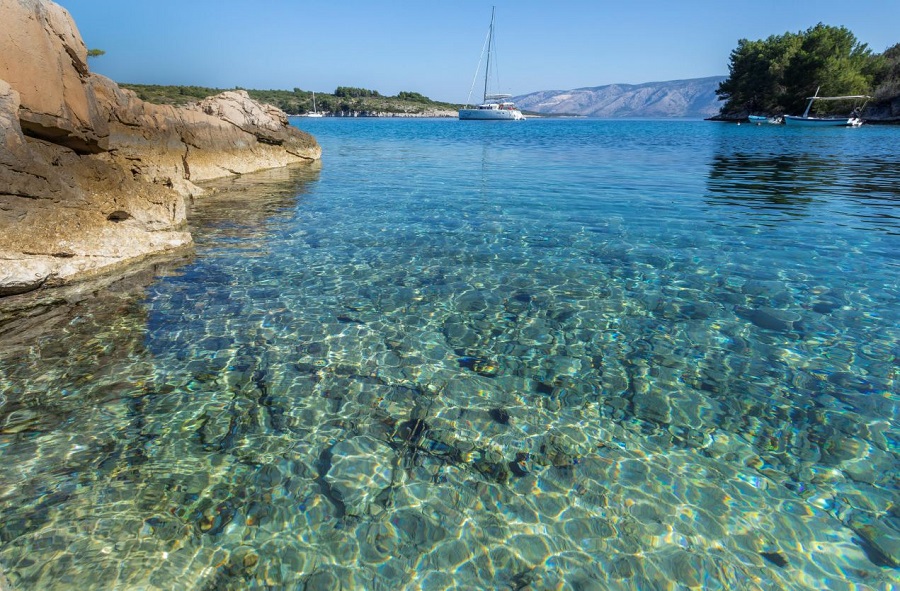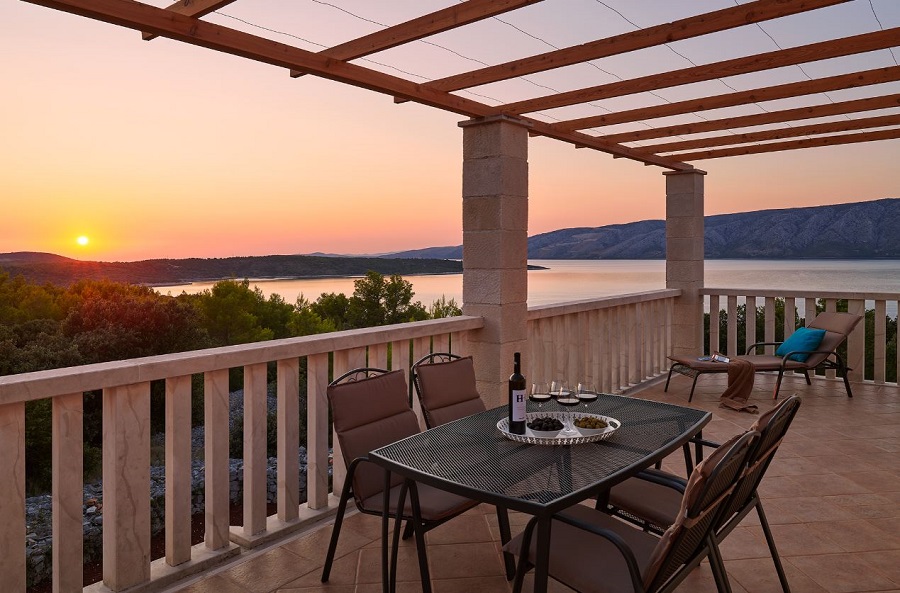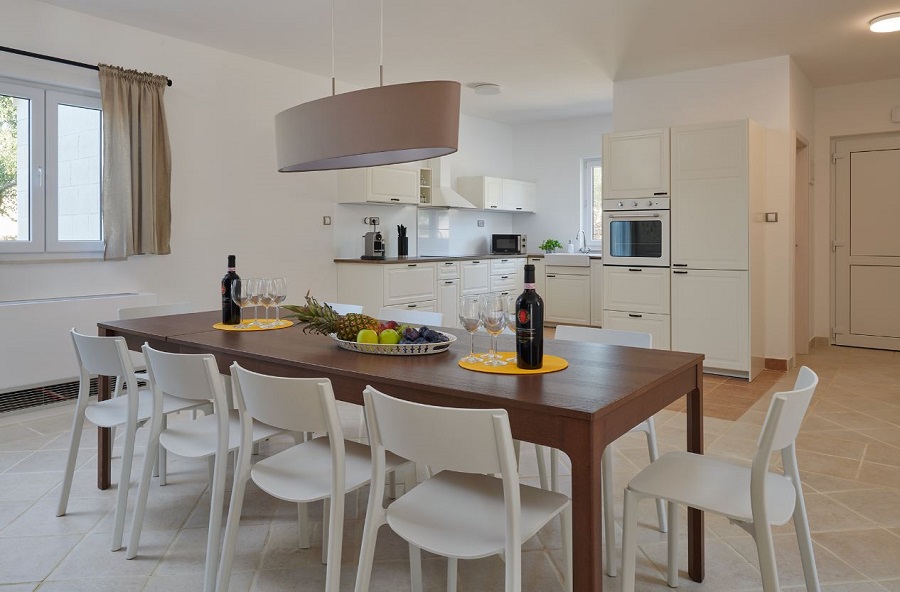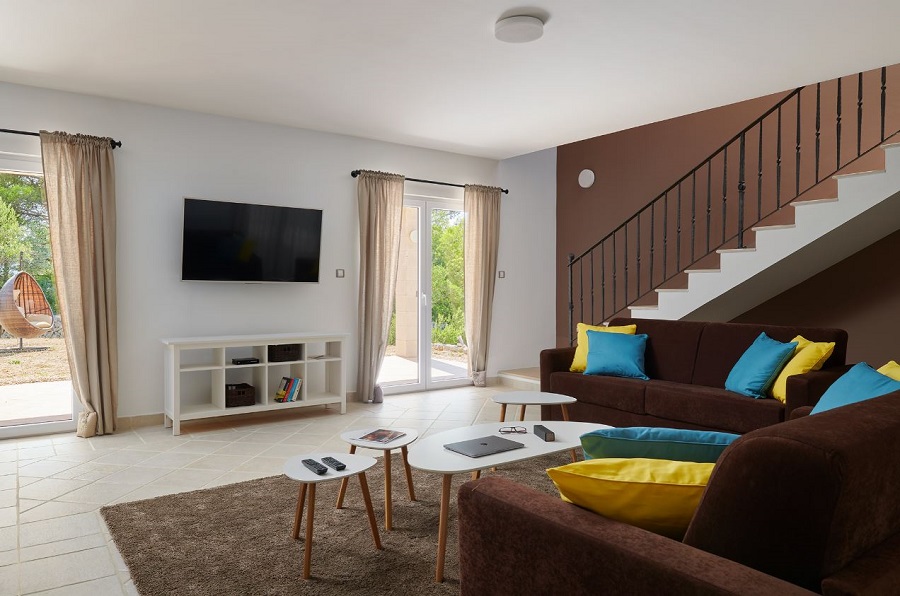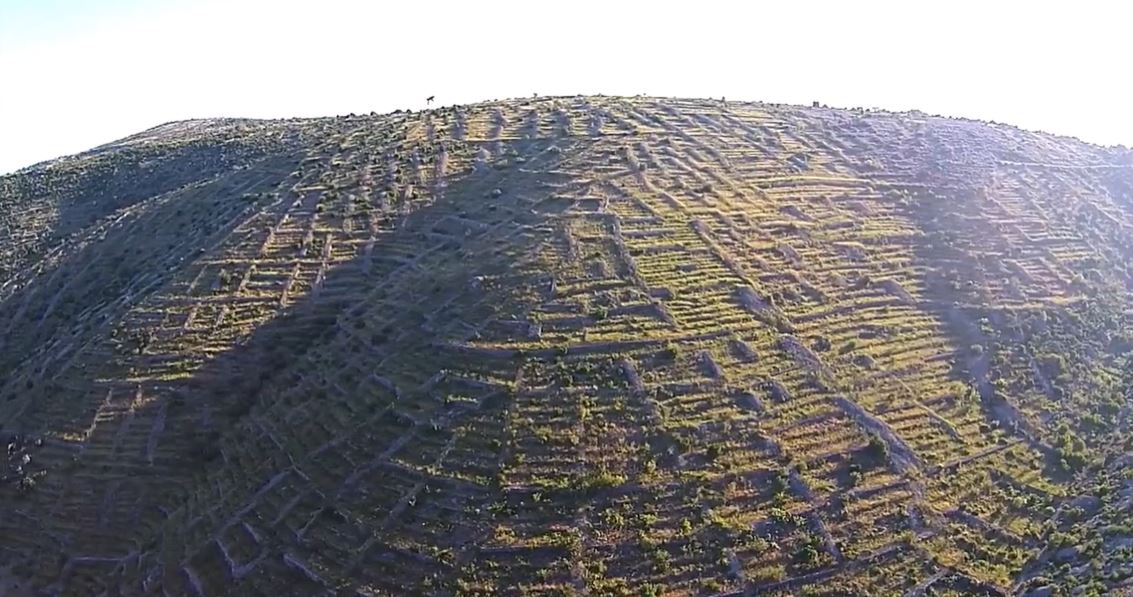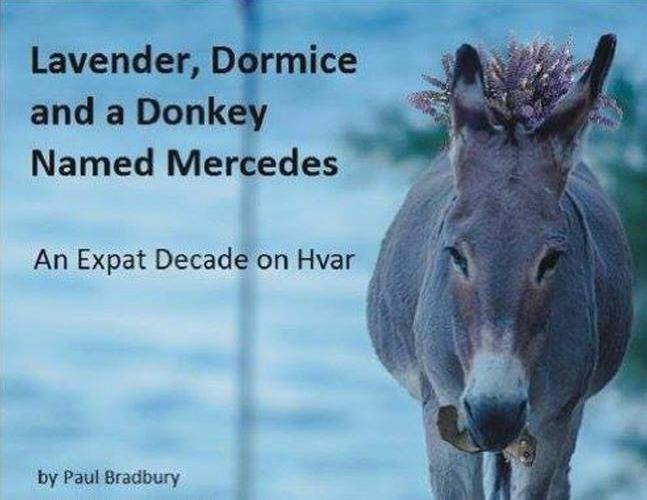To the Fields! Dalmatians Answer the Call of the Olive Harvest
November 2, 2020 - It is early November, and Dalmatians are answering the call, wherever they are - back to their roots for the olive harvest.
About ten years ago, I went to Zagreb to do a presentation to the board of directors of one of the big Koncar companies on the subject of compressed air leakage management (yes, really). The director was a man originally from Jelsa on Hvar, where I was living at the time, and in the small chat before the meeting started, there was inevitably a little discussion about life on the island.
It was late October, and he informed me that he would be returning to Jelsa the following week to take care of his fields, for this was the season of the olive harvest.
His colleagues teased him about his island ways, but there was a bond between us. Islanders in the big city, but ones who were quick to drop whatever they were doing in their posh city jobs when the call of the olives came around each year.
I saw the director on the main square in Jelsa the following week. His Zagreb suit had been swapped for Hvar olive harvest overalls. He smiled and waved.
The bond was strengthened.

It took me a long time to understand the cultural and psychological importance of the olive harvest to local people from my foreign viewpoint - years in fact. And yet now I feel sad that I am not answering the call of the olives this year, as I definitely feel it.
When I first became part of a Dalmatian family some 17 years ago, I really didn't get the obsession with olive oil. It was on EVERYTHING. As an uncultured Manchester boy, olive oil was not something that entered my dinner plate on a regular basis, and if I had consumed more than half a litre of olive oil during the 33 years of my life before Croatia, I would be surprised. But these guys put olive oil liberally on every meal.
As with most families on Hvar, my in-laws had their own olive grove, some 80 trees in all. In a good year, this was enough to produce over 200 litres of Dalmatian liquid gold - more than enough for the needs of the household, even with its liberal use. It didn't take long for me to get hooked on the Mediterranean Diet, especially with the delicious fare served up by my wife and punica, and olive oil was now an essential part of my life.
The only problem with having your own family olive oil...
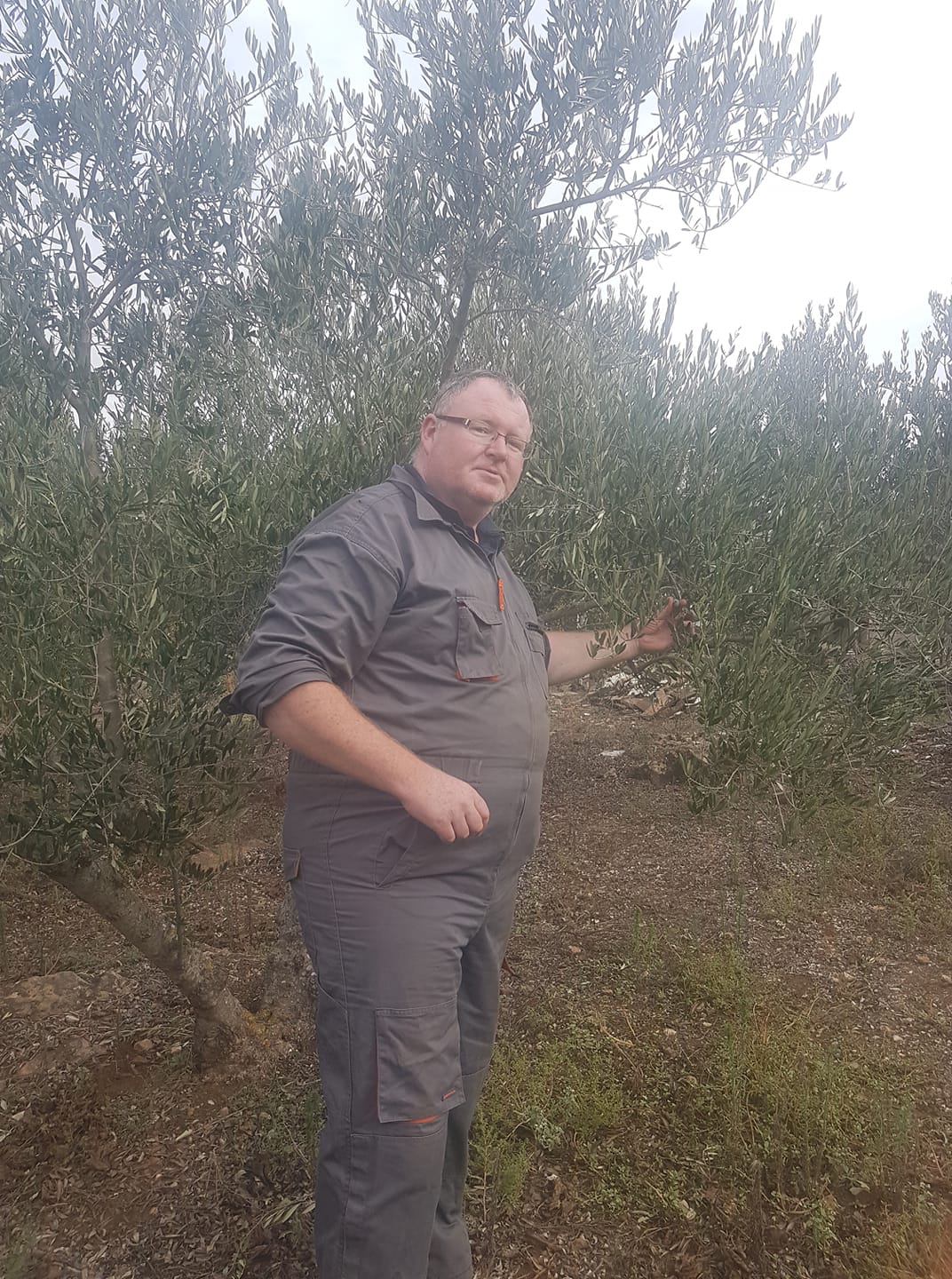
... is that someone has to pick the olives.
For years, I hated it, and I railed against the economics of it all. It would take X people to work Y days to come up with Z litres of oil. Add in the costs of the daily feast for the workers (of which more below), and surely it would be more economical to just buy the stuff from someone else.
The olive harvest was a major operation within the family, and one which I tried to avoid due to work for several years.
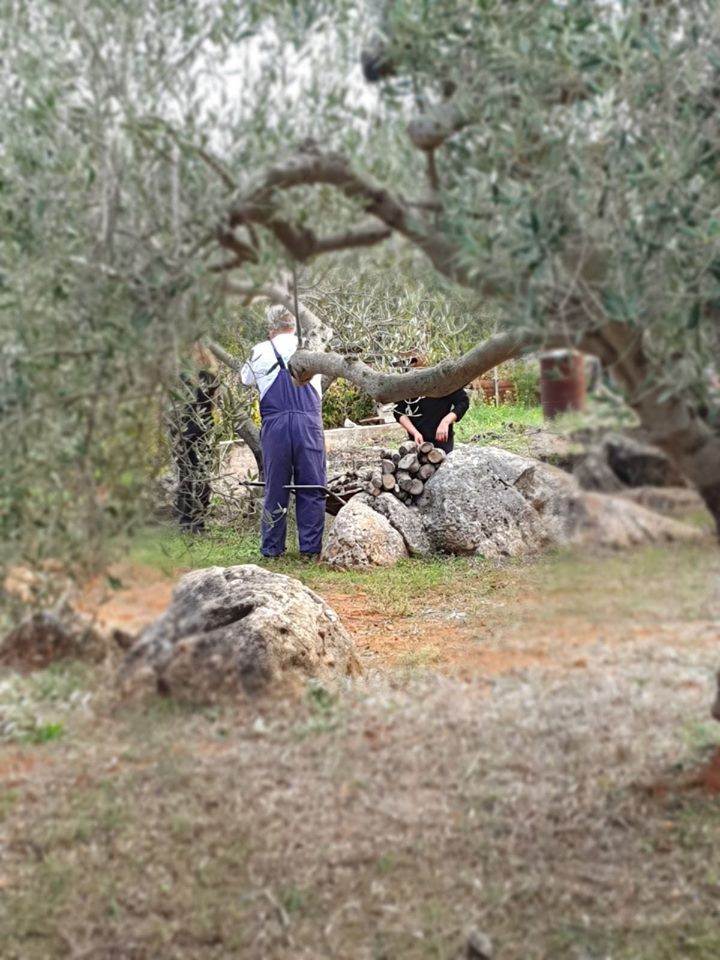
But I gradually began to understand that the olive harvest is far more than the oil produced at the end of the picking. It is an essential part of the Dalmatian way of life, and one which has changed little - if at all - in hundreds and even thousands of years.
No modern gadgets here, no time pressures, and nothing but relaxing nature, and the constant picking, picking, picking.
Extended family return to help out - either from the mainland or the island itself. Friendships that have been put on hold due to the busy tourist season are rekindled. It is an extremely social event.
If you want it to be. Or, if you was a complete detox from people and the pressures of modern life, choose a tree on your own in another part of the field. There is no hard and fast rule for olive picking - people do it at their own pace and in their own way.
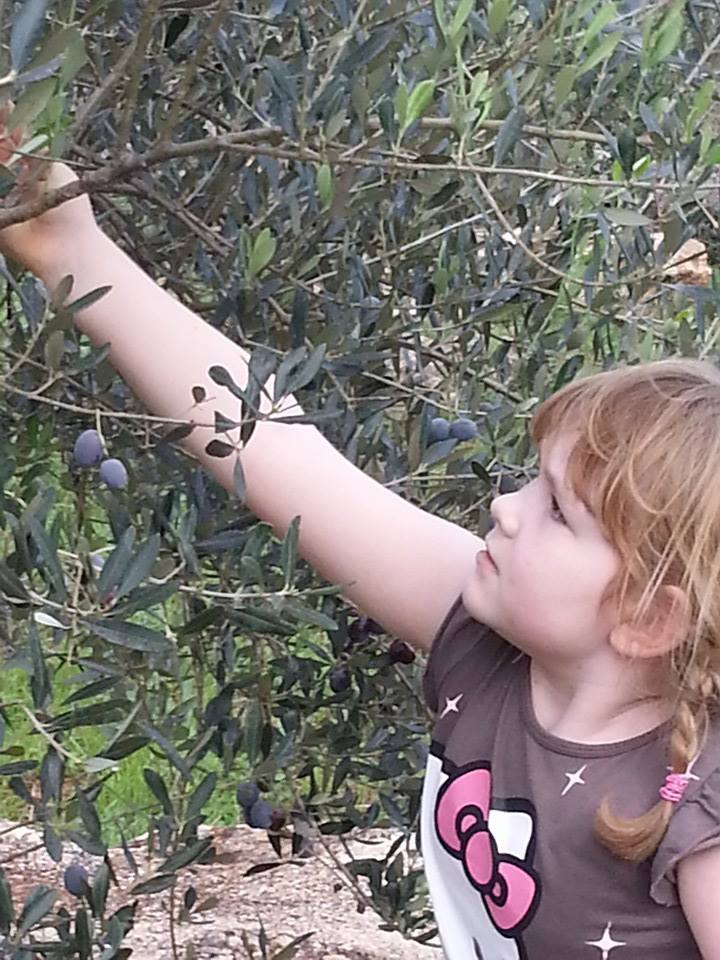
Growing up in Manchester, my connection with nature and the land was tenuous, and my fruit and vegetables grew in supermarkets. One of the things I loved about bringing up young children on a beautiful Dalmatian island was that early bond with nature. And nowhere was the bond stronger than helping out in Grandad's field...
The olive harvest is above all a family event which brings together different generations of the same family in a very relaxed setting.
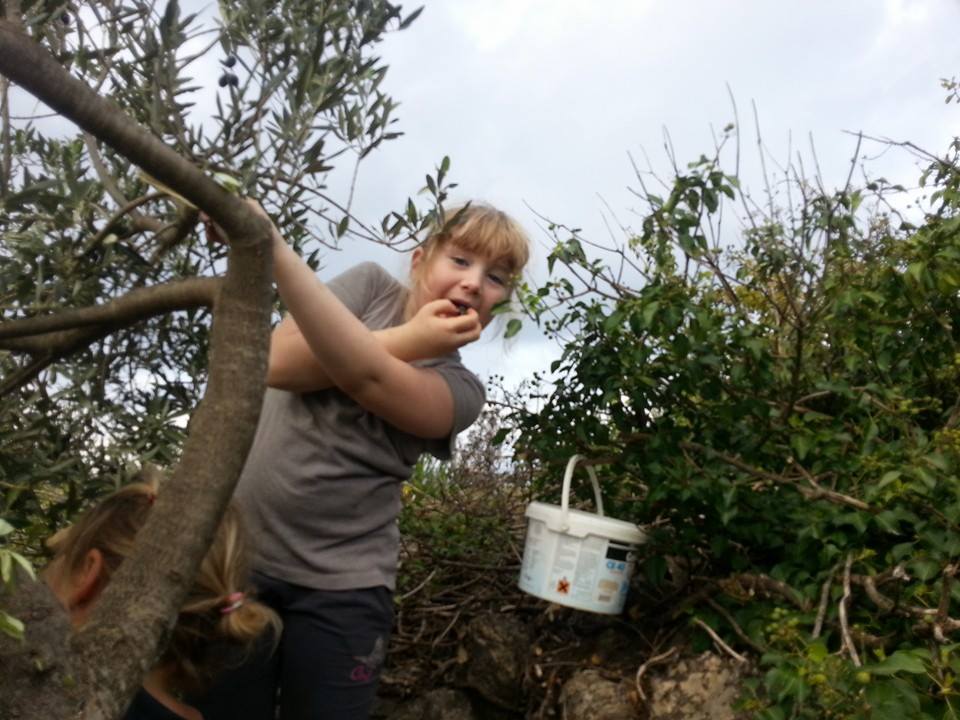
And there are plenty of opportunities for the little ones to play and explore while contributing to the olive harvest. Tree climbing is always fun, and the lighter and more nimble members of the team are always preferred to get to those harder-to-reach olives.
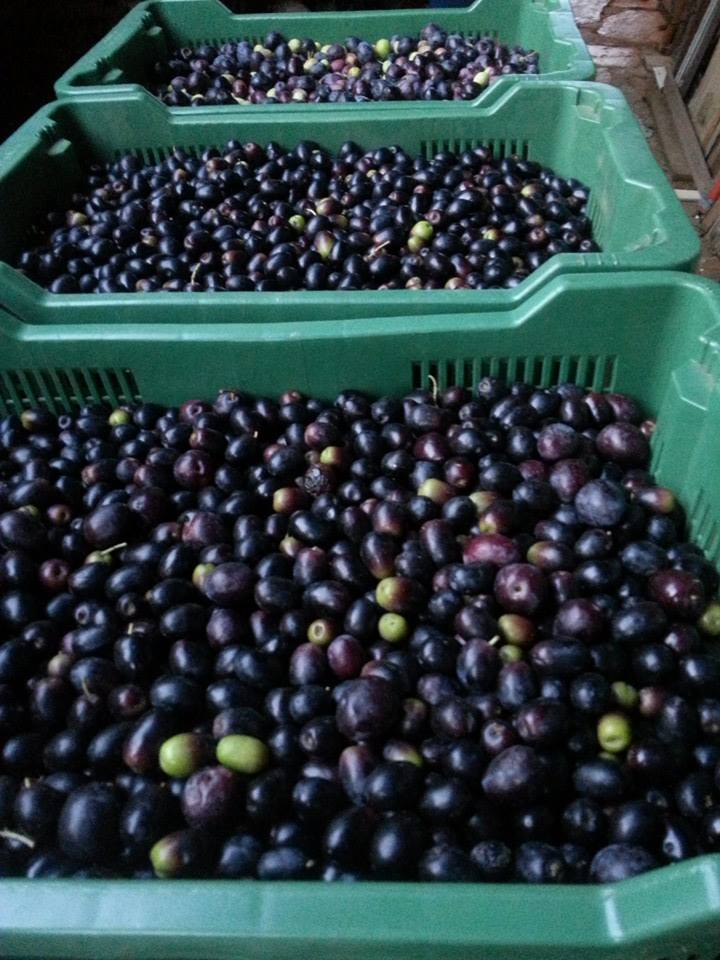
Depending on a number of factors, including the weather and number of pickers, the harvest for our family will take anything from three to eight days.
The precious olives are collected in containers.
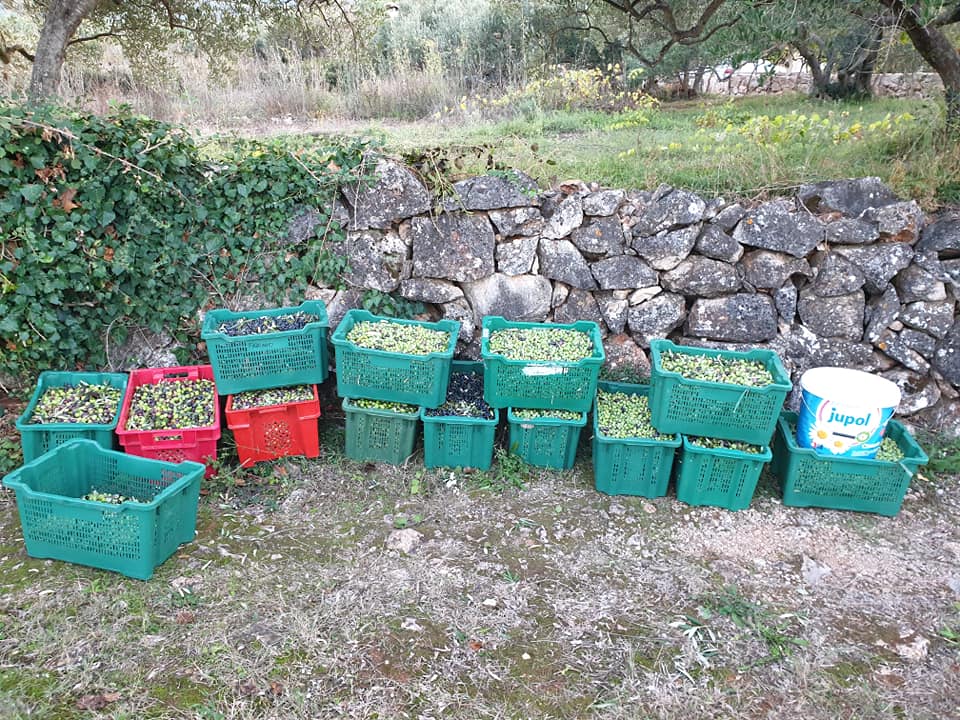
At the end of each day, they are taken off to the olive mill close by and pressed.
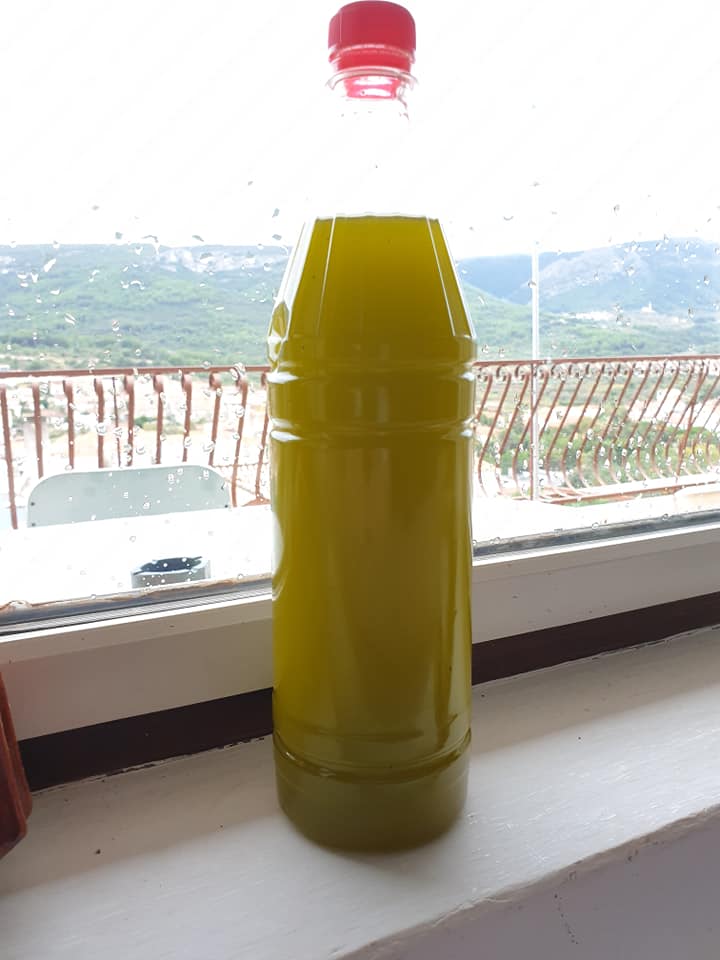
And one of the rewards for all the hard work will be several litres of this nectar, hopefully enough to service our annual needs back home in Varazdin.

And one of the other rewards - and a definite highlight - is the daily grill for the workers in the cabin the field. Grilled meat or fish, salad from the field, the family rakija and wine, and plenty of the family olive oil of course.
Dalmatia at its very finest.
For the first time in several years, I will not be at the olive harvest this year. School and work commitments took care of that. I am a little sad, as I still feel the bond with my Koncar director, and I definitely feel the calling.
But then I started to smile inside, as I took my wife to Varazdin Bus Station for the early bus to Zagreb. There, she would meet her sister and older brother, who were both taking time off from their corporate jobs, and they would drive to the island together. Her other brother is already on the island, and the four siblings will be reunited with their parents but without the kids or spouses, for a few days in the field, some 25 years after finishing school and moving on with their lives.
I can't imagine a similar example of something like this in the UK, and I think it is brilliant. One more example, perhaps, of why the sense of community and family is so strong in Croatia.
Next year, I will be there.
For the latest travel info, bookmark our main travel info article, which is updated daily.
Read the Croatian Travel Update in your language - now available in 24 languages.
Join the Total Croatia Travel INFO Viber community.
Hvar Archaeological Discovery: Amphora and Wine Vessels
As Morski writes on the 31st of October, 2020, on Saturday, an action was carried out to save an entire late antiquity-period amphora from the seabed close to the Paklinski islands near Hvar. In addition to the amphora, two other complete late antiquity wine vessels were found during the dive, marking yet another incredible Hvar archaeological discovery.
The amphora was found by Dr. Ivan Cvitkovic and Dr. Ante Zuljevic from the Institute of Oceanography and Fisheries during field research on foreign species along the seabed as part of the BENTHIC NIS project, which is otherwise funded by the Croatian Science Foundation.
The wine amphorae are dated to the period between the 3rd and 5th centuries, and the inside is coated with resin because the pottery is porous and liquid would leak through the walls of the vessel.
The action was organised by Tea Katunaric Kirjakov, an underwater archaeologist and lecturer at the Academy of Arts, University of Split, with the assistance of Kantharos d.o.o from Hvar, specialising in archaeological research, surveillance, photographic and photogrammetric documentation.
''The team from the Institute has been monitoring [the area] for many years and they noticed that there are antiquity vessels down there. With the erosion of Posidonia, the discovery of an ancient amphora came to light. Upon examining the terrain, we found two more ancient wine vessels which were completely preserved. One is a table jug and the other is for straining wine. We also found a number of fragments of amphorae around.
Our goal was to check whether there is a complete amphora or shipwreck remains, however in this survey of the terrain, we haven't yet been able to specify such a thing. It will be necessary to undertake another action and look at the deeper parts of the seabed to see whether the amphorae have rolled there,'' Tea Katunaric Kirjakov told Morski.
For the latest travel info, bookmark our main travel info article, which is updated daily.
Read the Croatian Travel Update in your language - now available in 24 languages
Condé Nast Traveler: Hvar is One of the Best Islands in Europe this Year!
October 7, 2020 - On October 6, 2020, Condé Nast Traveler published the results of the 2020 Readers' Choice Awards survey, ranking the 35 best islands in the world outside the U.S. Thus, Hvar is one of the best islands in Europe this year!
HRTurizam reports that the island of Hvar received another international award, namely the recognition of the readers of the renowned Condé Nast Traveler, whose votes this year ranked the five-best islands in Europe.
This year, Condé Nast Traveler organized the selection of the world's best islands for the 33rd time, and more than 715,000 voters participated in the Reader's Choice Award.
The announcement of the awards took place on Monday, October 5, 2020, when the laureates were announced by continent. It was the island of Hvar that shone in fourth place in the European list of the best islands.
Along with Hvar, the three best islands are the Greek islands of Folegandros, Zakynthos, and Crete, while the Greek islands of Mykonos and Skiathos, the island of Jersey in the United Kingdom, the Italian island of Ischia, the Spanish island of Mallorca, and the Turkish island of Bozcaada are behind Hvar.
"This award is proof of the right direction in which the tourism of the town of Hvar is developing as a world-famous and luxurious tourist destination. With 50,000 arrivals and 280,000 overnight stays this year, the award is a kind of crown, and from the view of the COVID-19 pandemic, of our successfully organized season in which we achieved our goals. We are honored to be in the company of the world's best islands - this is an award to all tourist stakeholders of our city and our island. Thanks to all faithful lovers of the island of Hvar who gave us their vote," said Petar Razovic, director of the Hvar Tourist Board.
Condé Nast Traveler points out that Hvar is an excellent destination to visit all year round, especially due to warm summers and mild winters, and points out the well-known Hvar statistics - that it is the sunniest island in Croatia, with more than 2800 sunshine hours per year. This world-renowned magazine also emphasizes the rich historical and cultural heritage of the town of Hvar - emphasizing Fortress Fortica, Arsenal, and the Hvar Theater as must-see cultural monuments. The editors also wrote about the famous Hvar lavender harvest and the Lavender Festival, which is becoming one of the main attractions in the summer months and which, despite the COVID 19 pandemic, was organized this year as well.
The Hvar Town Tourist Board continues with preparations for the 2021 tourist year, which, according to Razovic, will be very challenging.
"I hope that the Ministry of Tourism and Sports and the Croatian National Tourist Board will take over the guarantee of credit debt of local tourist boards with new amendments to the Law on Tourist Boards and promotion of Croatian Tourism and that HBOR will provide financial resources with commercial banks to work as successfully and readily as possible on the global promotion of Hvar, but also of the whole of Croatia in the tourist markets," concluded Razovic.
You can see the full list on Condé Nast Traveler HERE.
For the latest travel info, bookmark our main travel info article, which is updated daily.
Read the Croatian Travel Update in your language - now available in 24 languages.
Luxury Social Distancing on Remote Hvar Residential Peninsula Complex
October 6, 2020 - With the prospect of winter lockdowns a distinct reality, meet the remote Hvar residential complex near Stari Grad which provides a comfortable alternative for remote workers.
There is a hidden part of the island of Hvar which is very central, spectacularly beautiful, and rarely visited. Just 2 minutes by car from the town of Stari Grad, home to a UNESCO World Heritage Site and one of the oldest towns in Croatia.
A hidden part of Hvar which is both remote and accessible, full of protected natural beauty, just two small villages, and endless isolated bays and coves, where one might encounter some familiar faces - actor Goran Visnjic owned a property in one of the bays until recently.

(Photo Romulic and Romulic)
The Kabal Peninsula immediately north of Stari Grad is a dream for photographers from the air. It stretches 12 kilometres north to the northernmost tip of the island, where one can find some unusual manmade traces in this otherwise unspoiled paradise. At the top of the peninsula, there are some tunnels built in the Tito era to guard the Stari Grad channel. You can see them from the ferry if you look closely on the left as you enter the deep channel. But for an even better view, visit the tunnels at sunset - the views are truly spectacular.
But the main attraction of the Kabal peninula, whose idyllic 8.7 km2 is populated by just 72 people, is its arresting natural beauty. Who can resist a morning dip in waters such as this?
A few weeks ago, I wrote an article called As Tourists Leave Croatia, the Case for an Extended Autumn Stay on Hvar. It was written towards the end of August, with UK (and other) quarantines in force, and with talk of winter lockdowns getting louder. While Hvar in winter might not have the buzz of peak season, I argued, its abundant nature, sunshine, proximity to the sea, and healthy lifestyle made it a much more attractive option for those who were free to work or live remotely. I will be eternally grateful for the opportunity to lockdown on Hvar rather than in a city earlier this year. That sun, nature and those crashing waves helped with the sanity levels considerably.
Initial reaction to the article was mixed, including a healthy dose of skepticism. There is nothing to do on Hvar in winter, argued several. With reasonable Internet and access to global digital services, I would argue that there is a much better lifestyle on Hvar in winter than cooped up in the UK for months watching the rain and looking at the same old five faces day in, day out for months.
And then, as the threat of a restrictive winter became more real, opinion changed, and people started enquiring about availability. And here we are, in this crazy of craziest years, as we find our apartment empty in June but booked for a month in October. Two digital nomads, happy to work remotely in the sun on our terrace in Jelsa, while enjoying the magic of Hvar as a cycling destination.
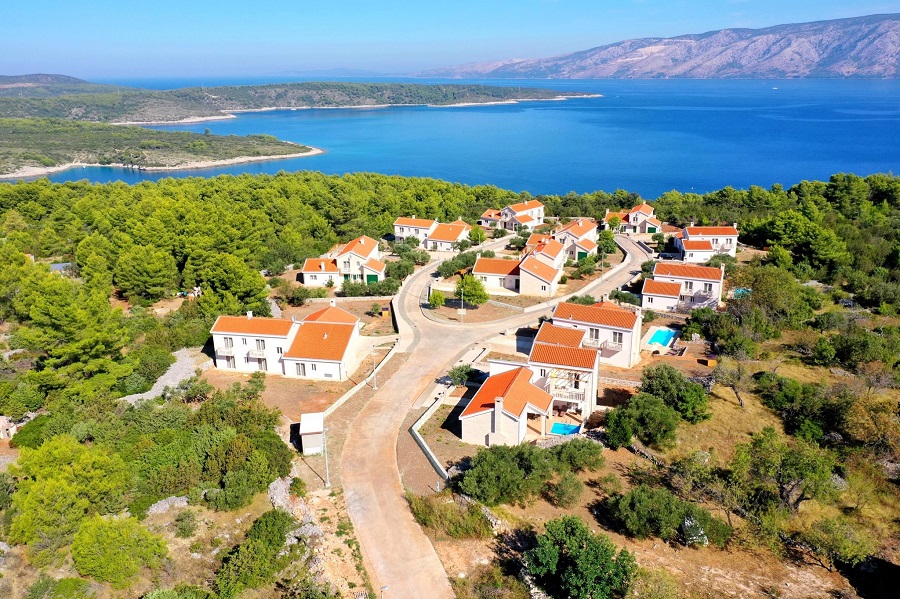
But something else happened in addition to enquiries from digital nomads. Local businesses and accommodation providers started getting in touch, offering their services and wanting to get involved in the new opportunity. Croatia's natural beauty, it seems, is attracting interest from remote workers looking for somewhere healthy to ride out the pandemic. A colleague told me that he is working with a resort on the coast to bring in over 60 people from an international company to work in glorious Adriatic socially distanced remoteness in a resort normally closed during the winter.
Which brings us back to our idyllic little peninsula, whose many secrets include what is actually the biggest successfully completed residential project on Hvar in the last 30 years. Eleven luxury villas, each with their own pool and sea view, in a well-maintained cul-de-sac more reminiscent of the hit show Desperate Housewives than rural Dalmatia, are the latest offering for those looking for a winter escape from the pandemic. And with views like this and such a relaxed setting, it would be easy to forget the troubles of the world.
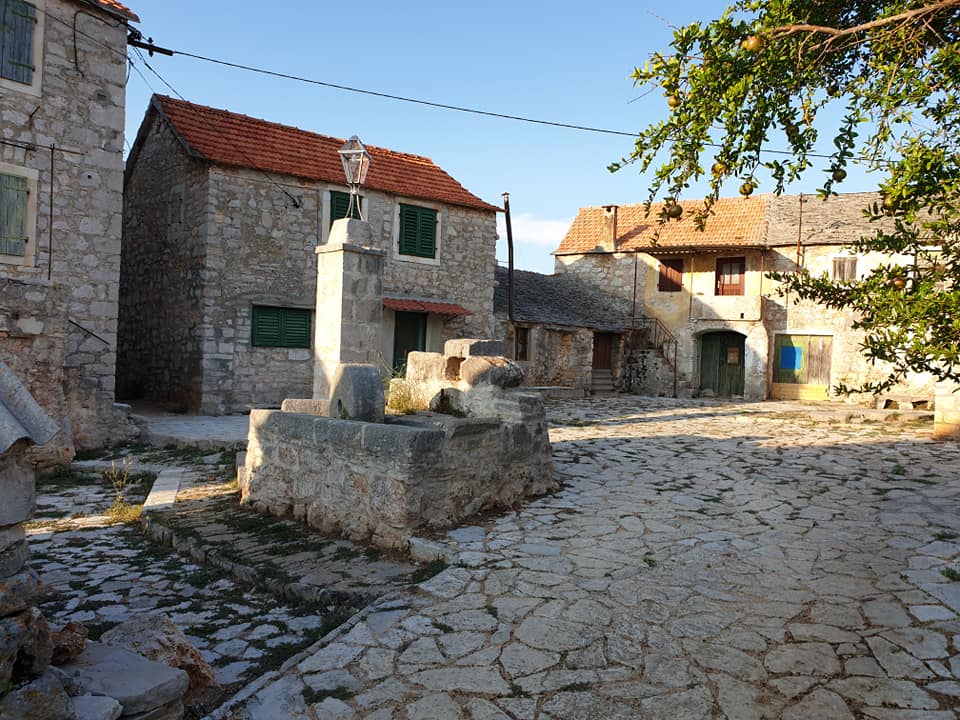
The villas are located in splendid isolation a short walk to the beach a short walk from the beautifully preserved ethno-eco village of Mala Rudina, with a permanent population of just 2. Traditional Dalmatia at its finest. Mala Rudina is a 5-minute drive to Stari Grad (or a 40-minute walk), the best town on the island for year-round living with its shops, 12-month restaurants, and ferry terminal to Split. The picturesque pedestrian old town dates back 2,400 years and is the perfect spot for a waterfront coffee to accompany a trip to the shops.

The villas themselves are still relatively unknown on the island, which is perhaps somewhat surprising as they comprise the biggest residential development on the island in recent memory.
You don't get sunsets like these in Manchester...
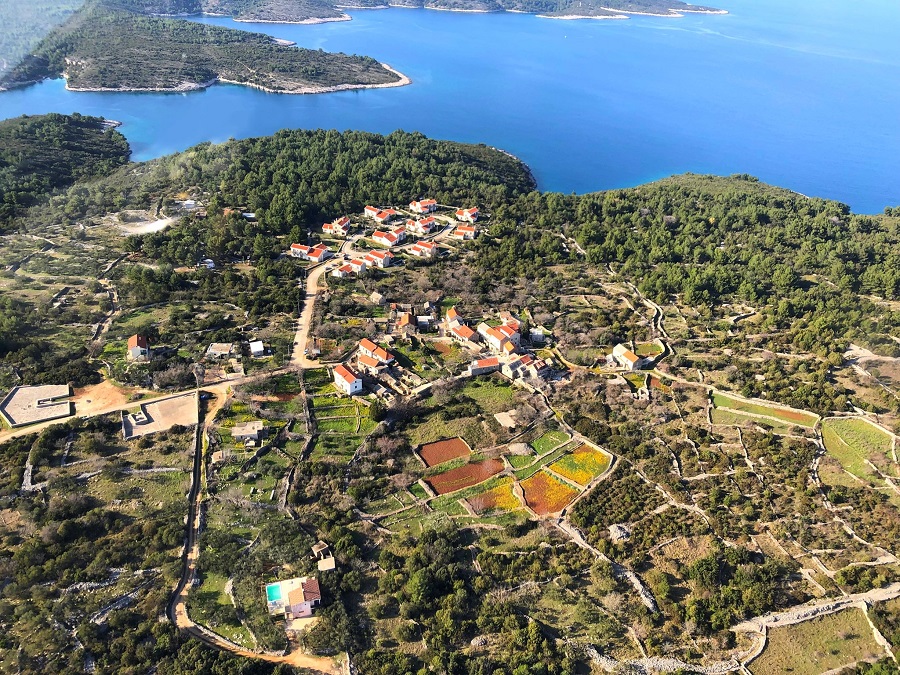
Construction started in 2004, but the complex was only completed last year, when new Czech owners finished off the villas to a very high standard, and they opened for business towards the end of last summer.
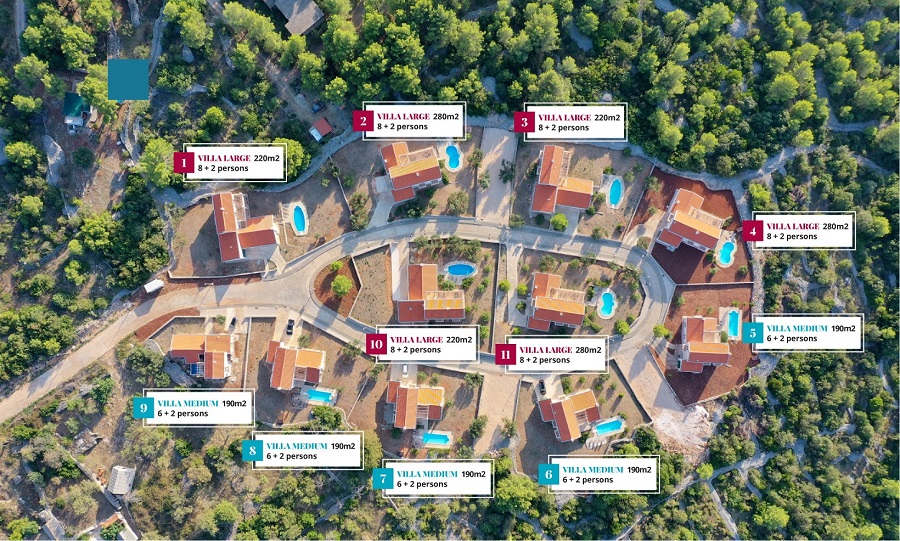
The villas come in two sizes - 280m2 sleeping up to 12 people, and 190m2 sleeping up to 10. Plenty of room to social distance, and that is only on the inside. Each villa comes with its own outdoor pool and landscaped gardens.
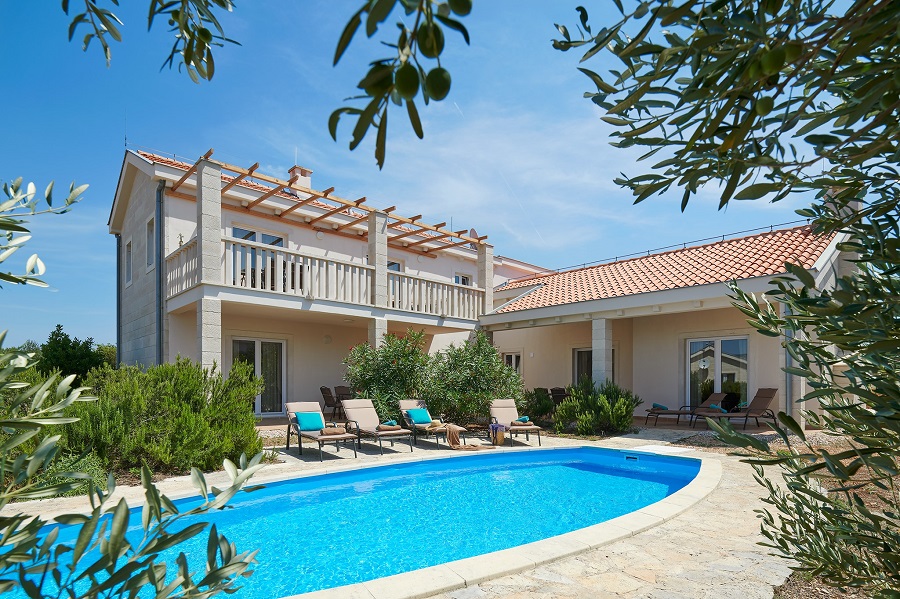
In order to adapt to the changing global situation, the villas are now available for longer term rent in the autumn, winter and spring seasons, with special packages available outside the peak season months.

Lockdown in Manchester, or breakfast on the terrace?
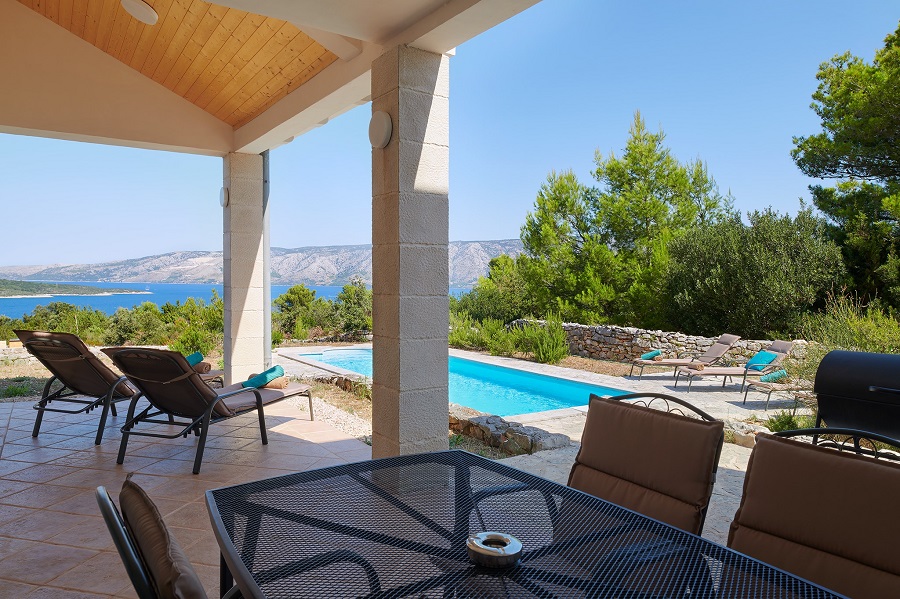
Having lived on Hvar for 13 years year-round, I am perhaps better qualified to comment on the winter experience there than many. Summer visitors used to full beaches, a wide selection of restaurants and a vibrant nightlife, complain that everything is closed in winter, and there is nothing to do.
While that is true up to a point, winter on Hvar offers a wealth of other great experiences, while it is also largely true in places that this is not much to do in places like Manchester in lockdown as well. The main difference being the sun, the abundant nature, and the freedom to roam.
The Internet is a wonderful thing, and it has made us all a lot more equal. Living on Hvar all those years, including during lockdown, showed me that while there were certain aspects of life I missed moving from a big city, access to good Intenet and fresh local ingredients for food meant that the quality of life was actually not as different as one might think. Factor in a lockdown, and a Dalmatian island wins every time. And if you do get cabin fever, there are several ferries a day to Split, a city which continues to impress in recent years.
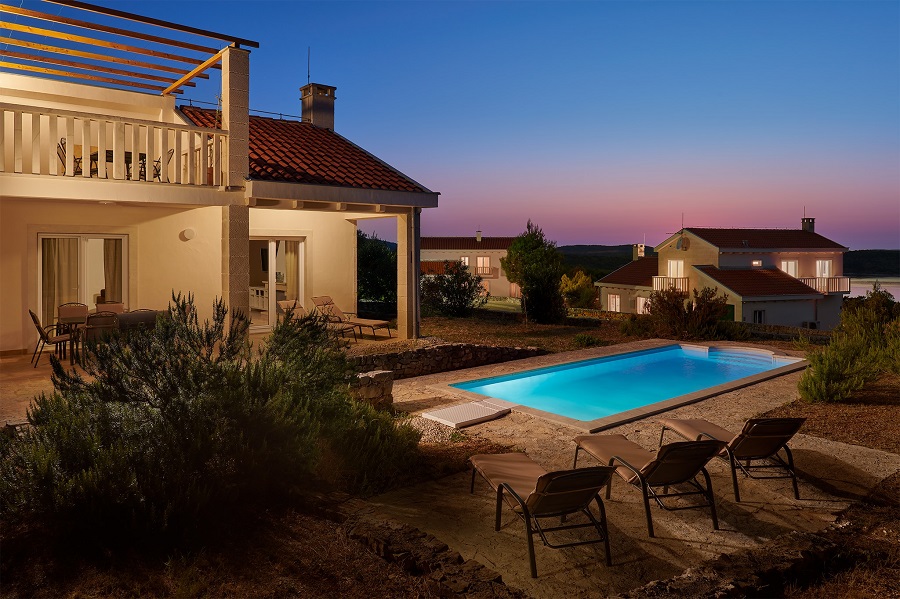
Did I mention the sunsets?
2020 has taught us to adapt to situations of unimaginable change. Organised tourism in Europe began on Hvar back in 1868 with the foundation of the Hvar Health Society. The focus then was on the temperate climate of the winter months for convalescing aristocrats from the Austro-Hungarian Empire.
Could another health issue - the coronavirus pandemic - help develop winter tourism once more on Hvar, this time powered by climate, lifestyle, healthy living and luxury accommodation?
To learn more about the luxury villas of Mala Rudina on the edge of Stari Grad, visit the official Luxury Villas Stari Grad website.
For more news from the island of Hvar, follow the dedicated TCN section.
For the latest travel info, bookmark our main travel info article, which is updated daily.
Read the Croatian Travel Update in your language - now available in 24 languages
Daily Telegraph Features 1st Master of Wine Making Wine in Croatia
September 20, 2020 - The Daily Telegraph features Master of Wine Jo Ahearne, the first MW to make wine in Croatia. Grapes from Hvar, Hands from London.
One of the most interesting developments in the last few years has been the arrival of the first Master of Wine to produce wine in Croatia from indigenous Croatian varieties.
Jo Ahearne MW took the plunge back in 2014 and moved to Hvar. After years of consulting and buying wines for the likes of Marks and Spencer and Harrod's of London, she had been looking to make her very own wine, and the indigenous grapes of Hvar combined with the relaxed Croatian lifestyle seemed like the perfect opportunity.
I have known Jo since those early days and watched with awe as she has mastered her craft despite the complexities and bureaucracy of starting a wine business in Croatia.
A key early theme has been to use local grape varieties, of which Hvar has several unique sorts. Her debut wine, Rosina, a rosé made from Drnakusa, was met with critical acclaim, and she has been slowly expanding her range from there.
Perhaps her most acclaimed wine is the maceration wine 'Wild Skins', which is a blend of Posip and two Hvar varieties, Kuc and Bogdanusa (which literally translates as 'a gift from God').
I did smile to myself a couple of years ago, as Jo headed off on a wine tasting tour of note. Invitations to exclusive addresses in Tokyo, Kyoto, Melbourne and Sydney - new frontiers for the humble grapes of Hvar, inspired by the vision of a straight-talking Londoner.
After some time making wine on the south side of Hvar, Jo has moved her production to the hilltop village of Vrisnik in central Hvar, from where she runs great wine tastings, which are growing in popularity.
Media attention is also growing in this fascinating relationship between a Master of Wine and the indigenous grapes of Hvar, with today bringing perhaps the biggest exposure yet - a very well-written piece in The Daily Telegraph.
I’m lucky that Jo Ahearne agreed to speak to me during harvest. Winemakers are always hard-pressed when the grapes are being picked, so it’s no surprise that our chat is aborted a couple of times. “It’s all going crazy here as all the whites have decided to come in at the same time. Normally they form an orderly queue,” she messages from the Croatian island of Hvar, a haven of pine trees and lavender fields in the Adriatic, where she has been making wine since 2014. Another day we’re emailing at 4am.
Read the full story in The Daily Telegraph here.
For more information about Ahearne Vino, check out the official Facebook page.
For the latest travel info, bookmark our main travel info article, which is updated daily.
Read the Croatian Travel Update in your language - now available in 24 languages
Journey Back in Time: Take the Hvar Old Road from Stari Grad
September 19, 2020 - It is one of the most beautiful road journeys in Croatia, and one with little traffic these days. Have you taken the Hvar old road from Stari Grad?
Connectivity on the island of Hvar changed a lot in 2001, the year before I arrived on Croatia's Premier Island. The opening of a tunnel and new fast road between Stari Grad and Havr Town meant that journey times were cut to just 20 minutes, and there was no longer any need to go over the top of the island.
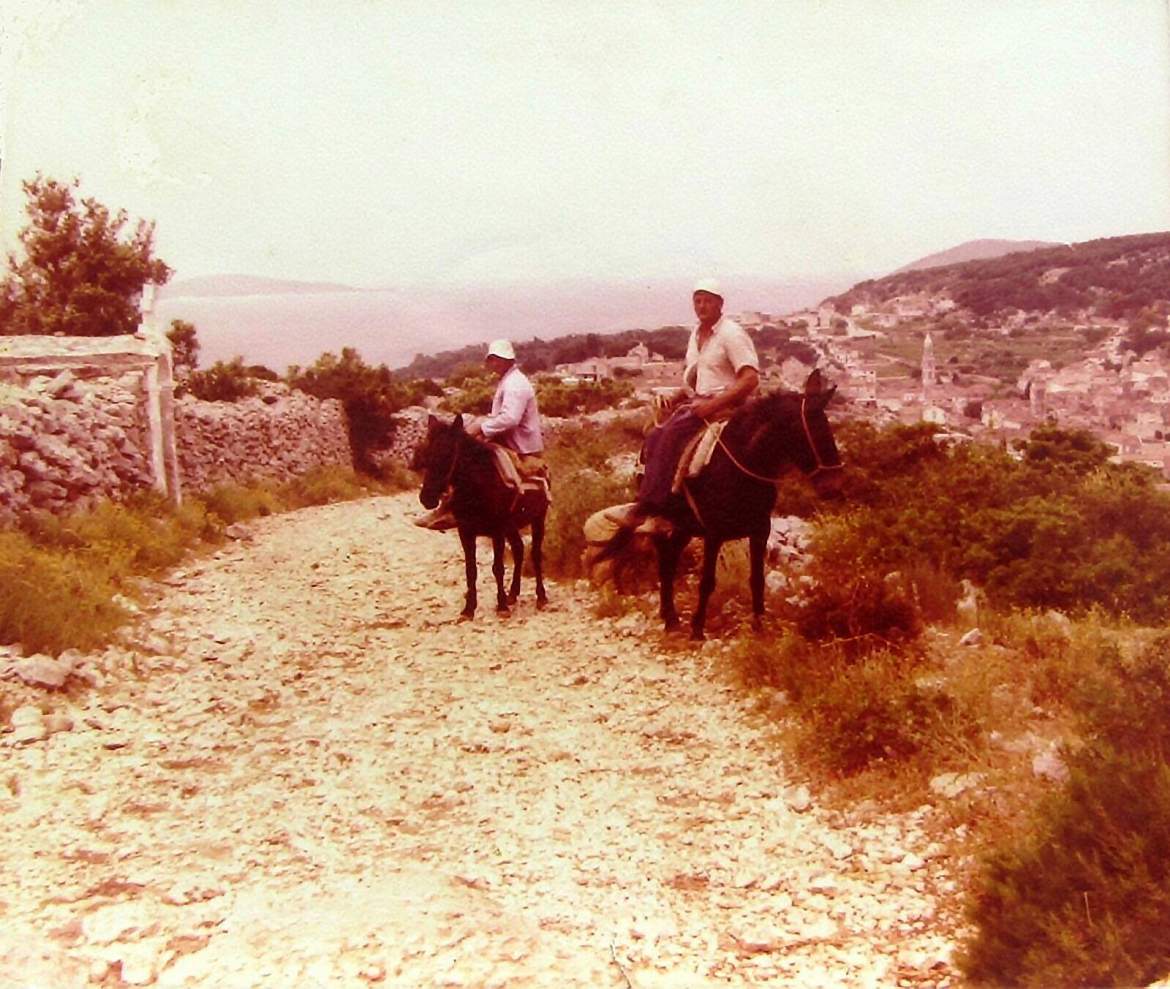
(Photo credit Prosper Maricic)
The new road was certainly an upgrade on the previous path - a great 1971 photo of the slow journey to Milna along the same route.
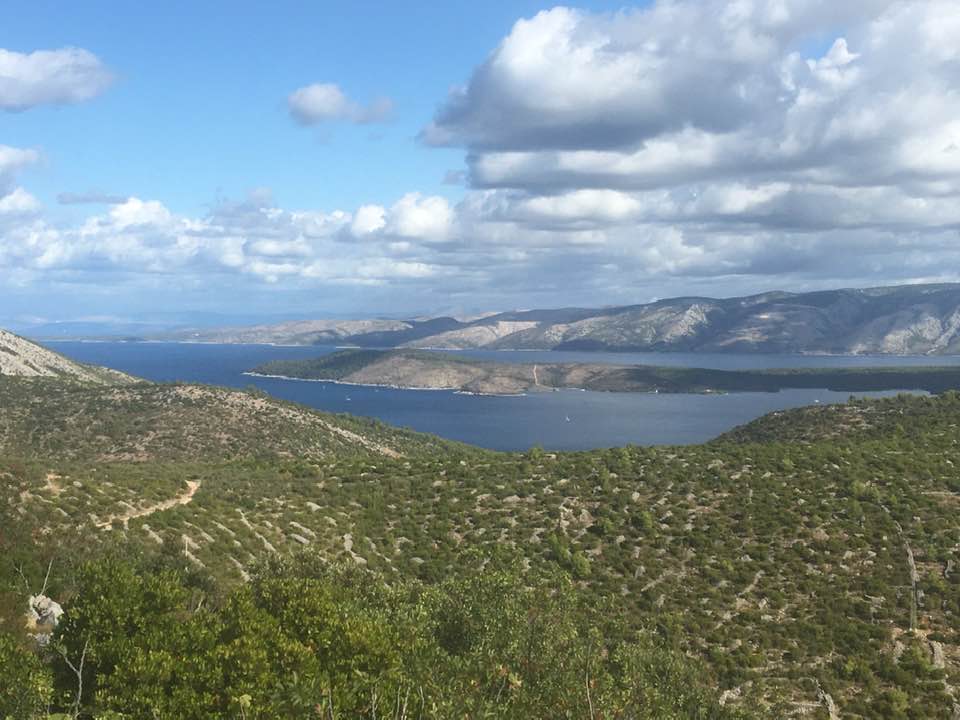
(Photo credit Andy Leedham)
Because of the quick connection between the two major settlements on the island, the Hvar old road - which hitherto had been the only transport artery - lost its popularity overnight and has been largely forgotten ever since. Indeed, it took me a while to take the left turn at Stari Grad, direction Selca and Brusje.
But when I finally did, I found one of the most beautiful and most tranquil parts of the island. Right from the turn off the main road and slow ascent, the views were astonishing - the northern view to Brac and the mainland over Hvar's Kabal Peninsula above Stari Grad.
And there was quite a climb. The road has become popular with cyclists and is now also home to the annual Hvar Half Marathon, surely one of the most beautiful runs in Croatia.

After just a few minutes, the first village came into view - Selca. Back in 2003, when I started a real estate business on the island, the village was all but abandoned, with a permanent population of just five people. It was wildly popular with foreigners, eager to buy and renovate some Adriatic stone in a pretty village just five minutes from the ferry. I sold five properties in the village, all of which got renovated to a high standard.
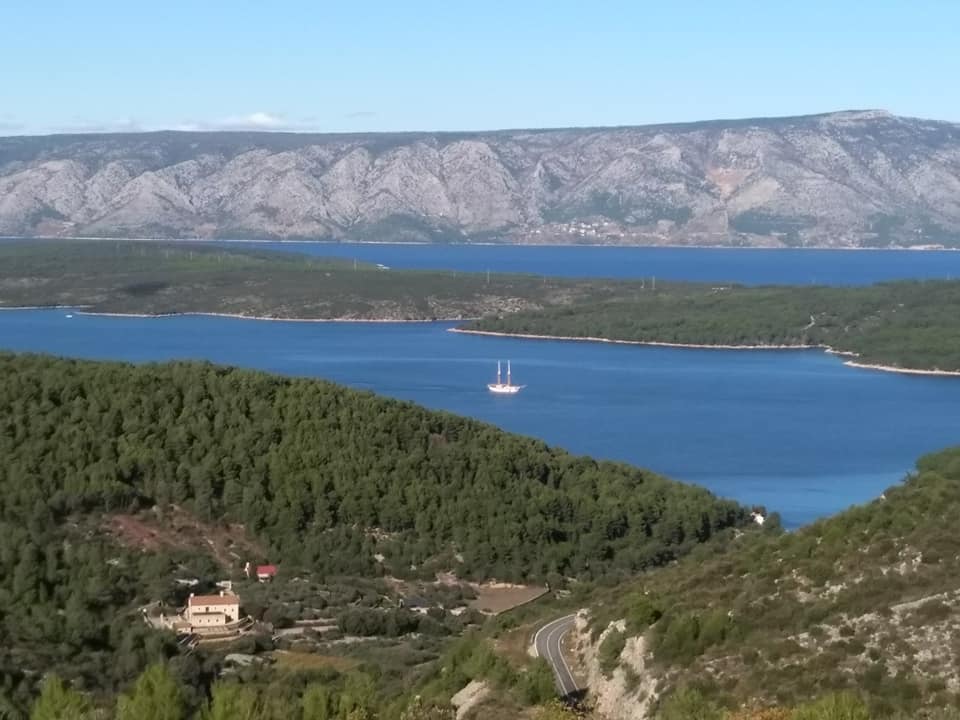
The village also comes with something which the Hvar old road specialises in - a spectacular view.
Shortly after Selca, there is an unpaved path to the left with a sharp turn. Take it and it will lead you to the very peak of Paradise - a 360 degree view of the island and the Adriatic from the top of Hvar. Highly recommended for sunrise and sunset. A normal car can drive most of the way, with the last 300m recommended to walk
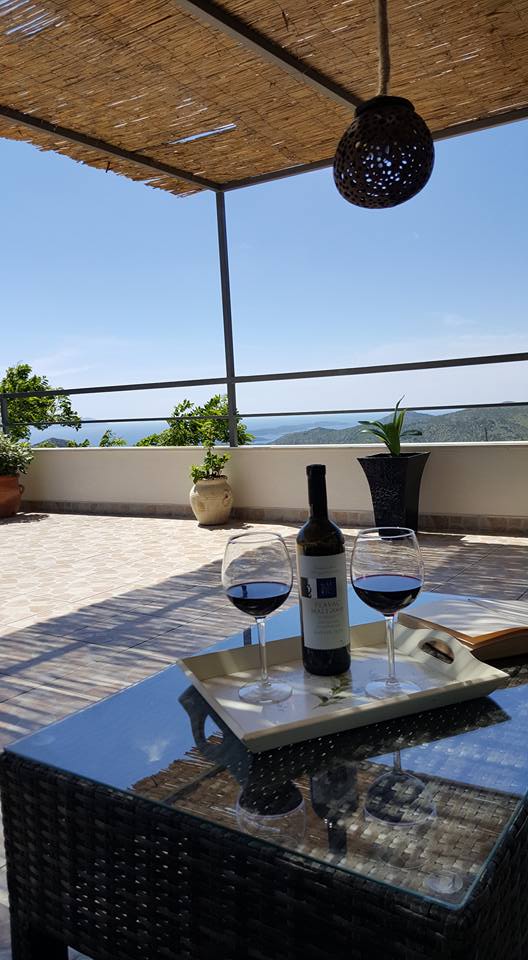
Continue on, however, and you will come to the recently renovated restaurant, Vidikovac Levanda, which is blessed with rather a nice option for its guests - sea view to the south towards Vis with your meal, or sea view to the north. Both are outstanding, as is the food.
Perhaps the most unusual sight on the Hvar old road is the abundance of dry stone walls, which appear like a giant patchwork in the fields and hills around. Dry stone walling has now been inscribed as intangible UNESCO heritage, the 6th UNESCO heritage Hvar has (more than any other island in the world). It is very skilled work. I used to joke with clients that winters were very slow on Hvar, and these were the result on an annual best dry stone wall competition. The reason, of course, is that the stones were sorted from the land for agricultural purposes.
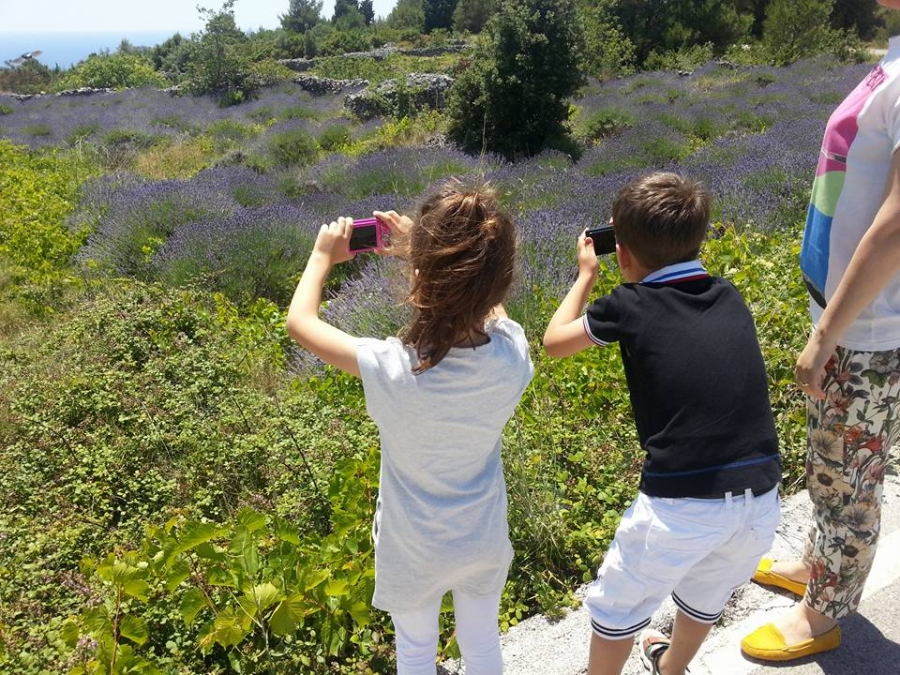
Come in June and July and you will see another unusual sight. Cars abandoned at the side of the road, their passengers wandering into the nearby fields for selfies with nature. For this is lavender season, one of the things for which Hvar is famous. The picturesque and aromatic lavender bushes are too gorgeous to resist.
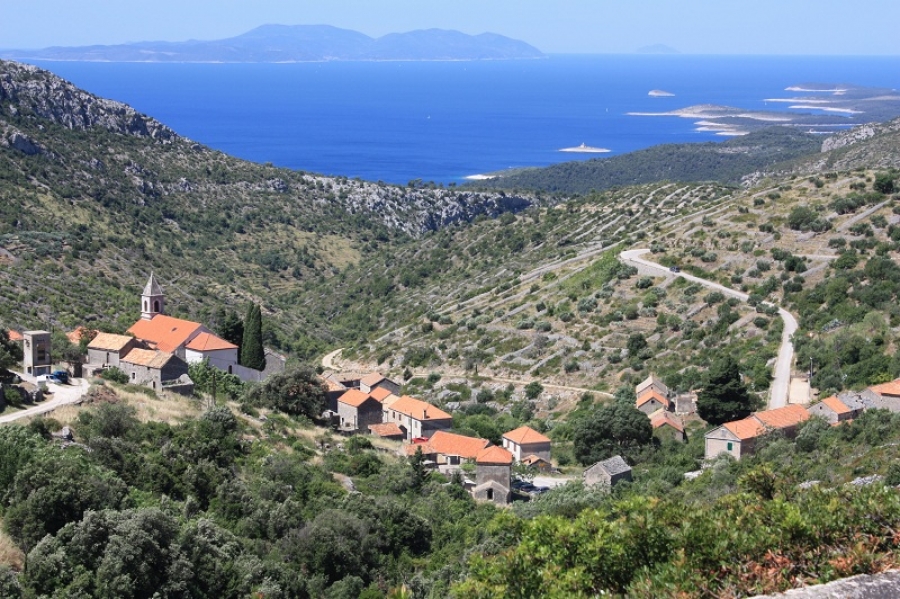
And if you cannot make the festival, park the car and enjoy the south-side view. Perhaps above the village of Velo Grablje, which was once the centre of lavender production in all Dalmatia. It too had a population of just view 15 years ago, a number that has now swelled to at least 14, as well as a new restaurant, winter pub and... lavender festival at the end of June.
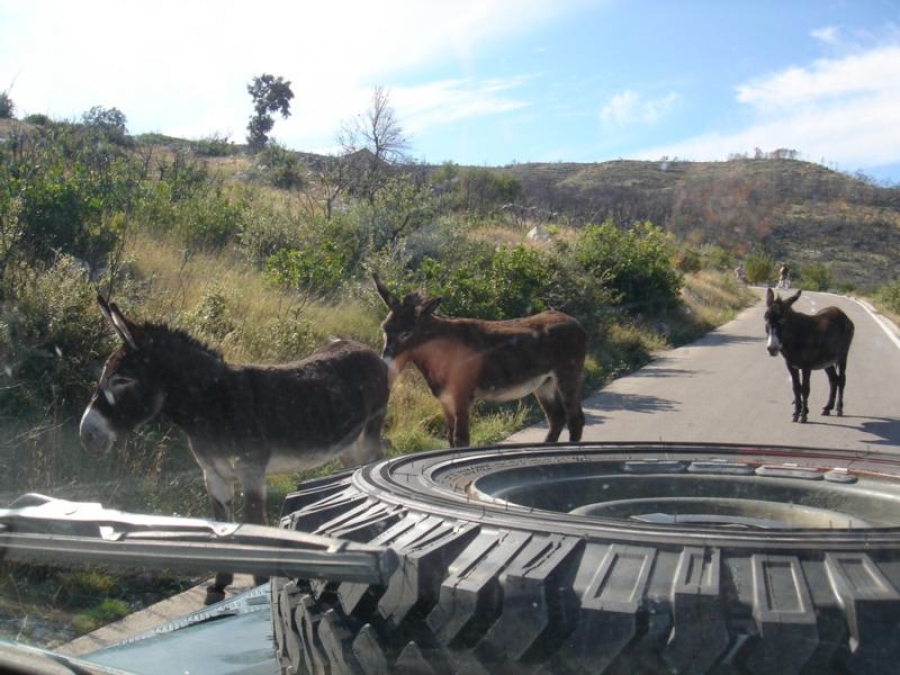
There may not be too many cars on the Hvar old road, but there are other travellers to look out for. Timeless Dalmatia is perhaps best symbolised by one of its most beloved icons - the donkey.
Donkeys are a lot less common that there were in Dalmatia, but there are still plenty around, and the biggest concentration of donkeys on Hvar is in the second and last village on the Hvar old road.
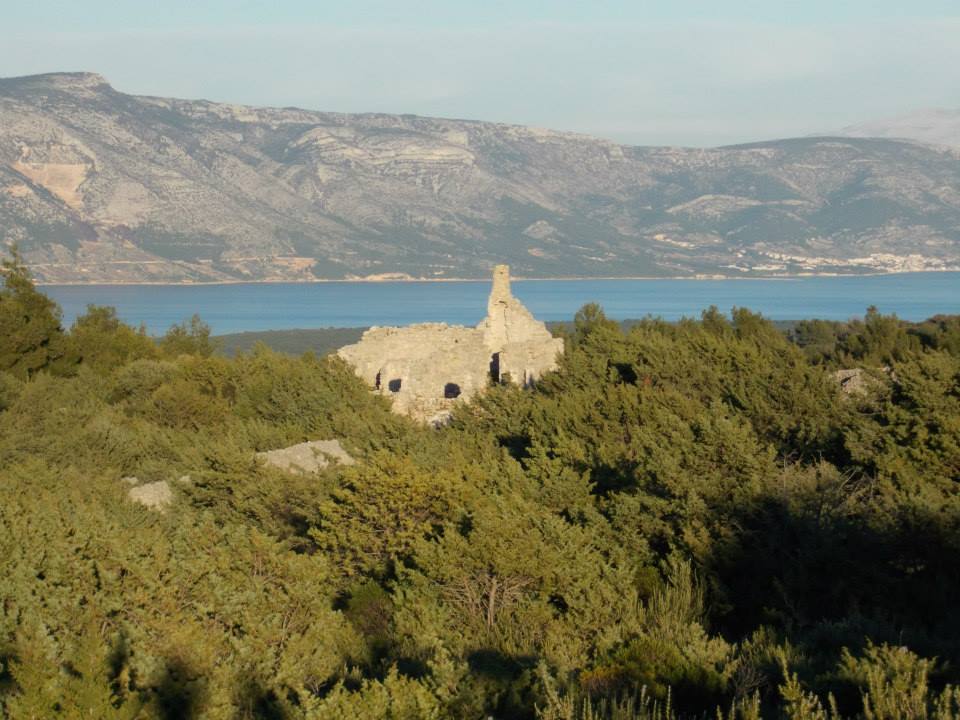
(Entrance to Brusje)
Brusje.
Brusje is 6 km from Hvar Town, offering fabulous sea views, this time back to the north. My father-in-law is from the village, and he often recalls the 6 km walk to school through the fields, and the 6 km home again. A different world. The island has strong intellectual credentials. It is apparently home to the first library on a Dalmatian island, as well as a large number of its residents going on to be doctors and working in other distinguished professions.
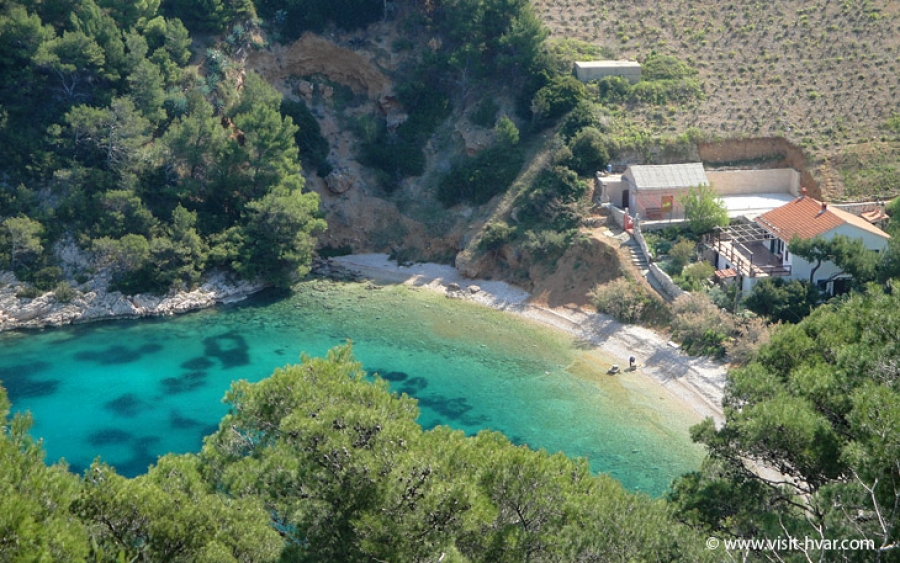
(Photo credit Visit Hvar)
Looking for a beach away from the crowds? The beaches in the Brusje bays are fantastic and relatively undiscovered. Get to know them here.
As the road twists and turns with wonderful views of the Adriatic, there is one more turn which is highly recommended if you have the time - a left just before Hvar Town to climb to the Napoljun fortress high above the famous town.
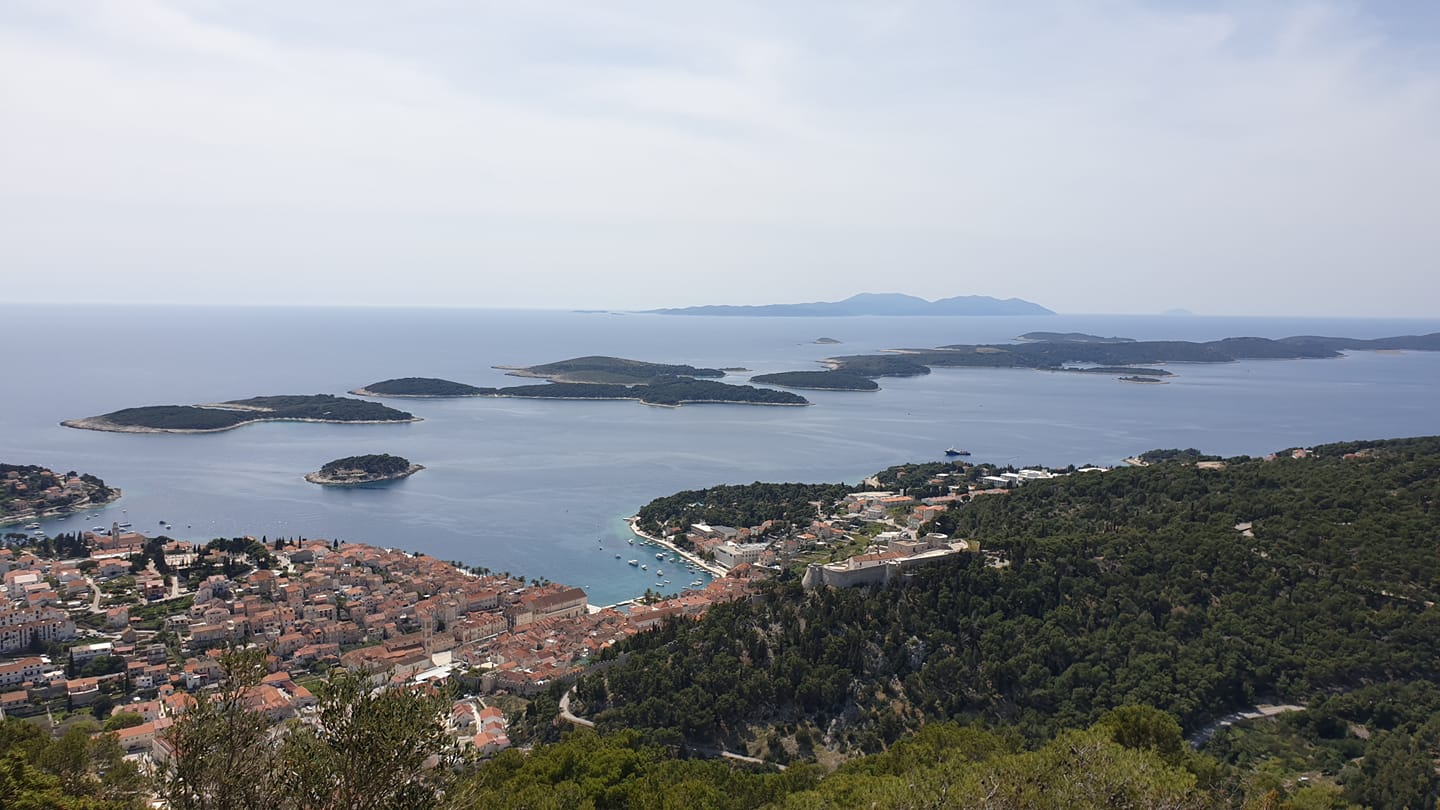
For there is perhaps the best bench view in all Croatia.
And once you have admired the view, now find out about all the incredible things you are looking at in this video explanation below.
A word of warning to cautious drivers. There are plenty of very windy parts of the road, and barriers are not in place at all junctions where the land drops next to the road, so take it slow. I just can't imagine how this road functioned before the opening of the new road in 2001, especially in peak season. The impatient German Mercedes driver behind the Italian caravan, that kind of thing. And when two caravans approached in different directions...
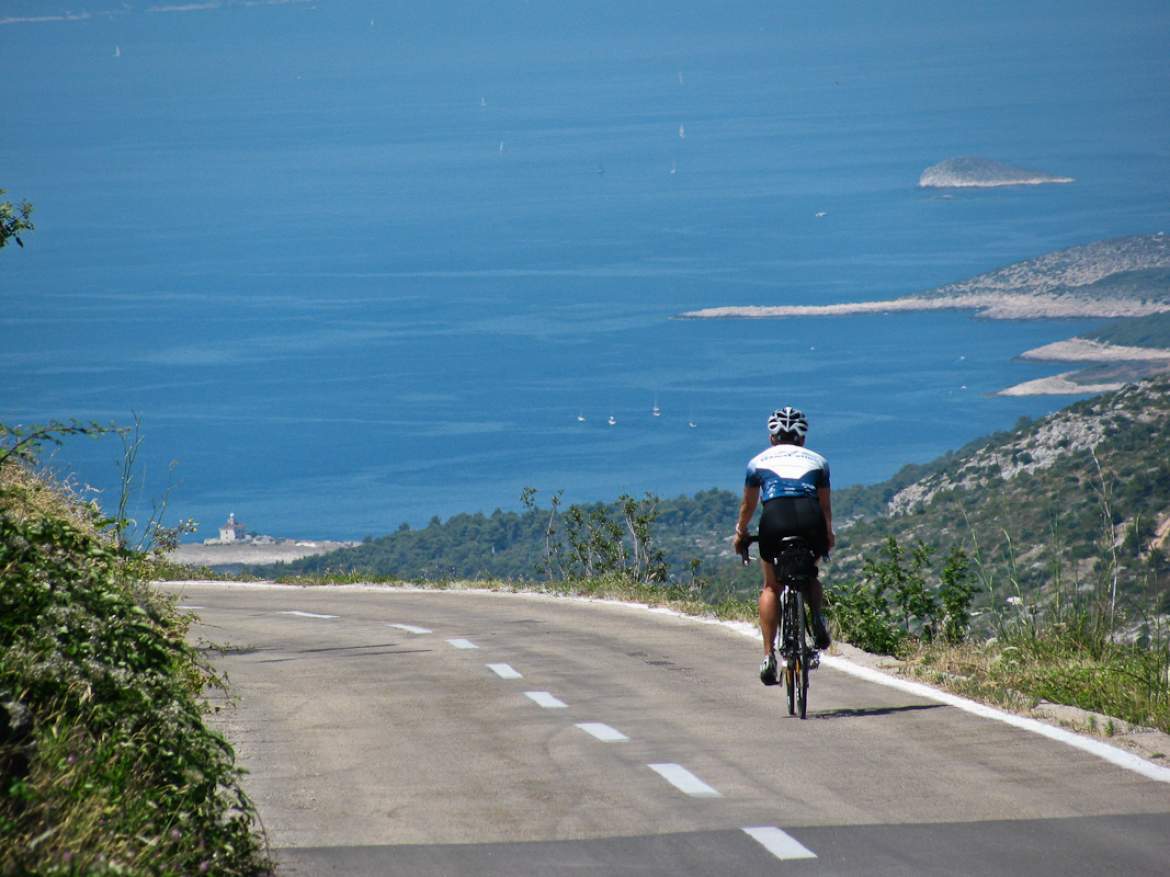
(Photo credit Hvar Adventure)
The Hvar old road has become much more popular for sport in recent years, in particular for cycling (the photo above is from the new road - I couldn't find one of cycling on the old road, but the view are equally breathtaking. Leading cycling team Bahrain McLaren have been coming to Hvar for three years now for their winter training and testing their skills on this gorgeous road.
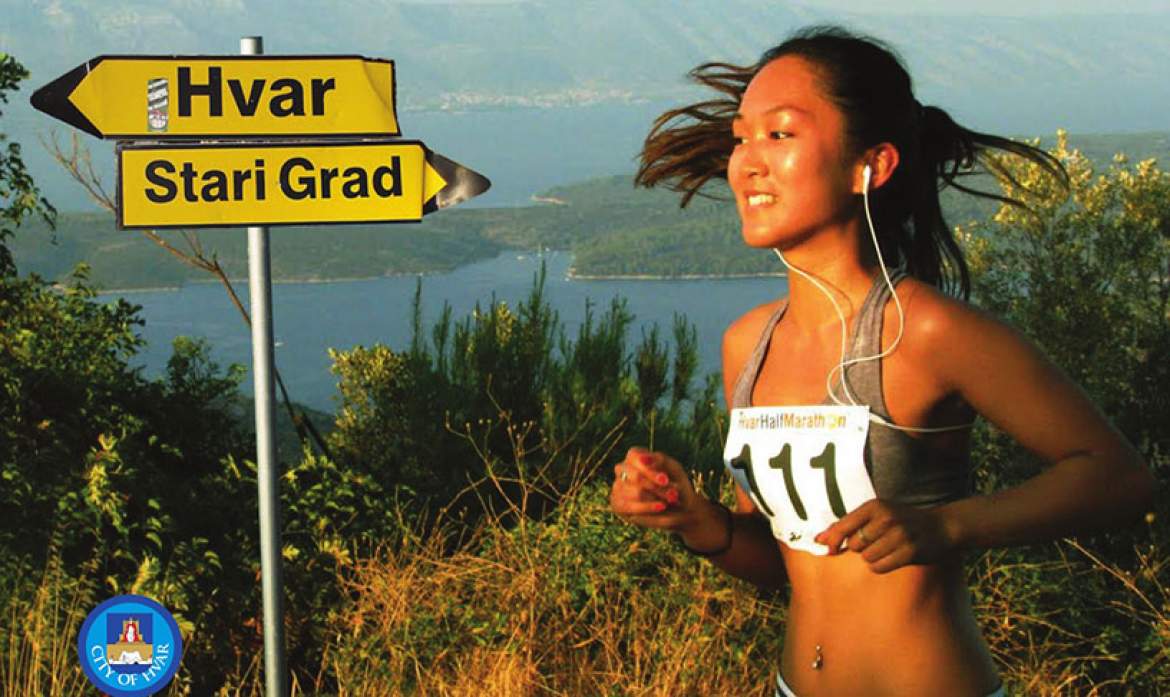
(Photo credit Hvar Half Marathon)
As previously mentioned, the road is also home to the Hvar Half Marathon, a 21 km race from the centre of Stari Grad to the finish on the main square in Hvar Town.
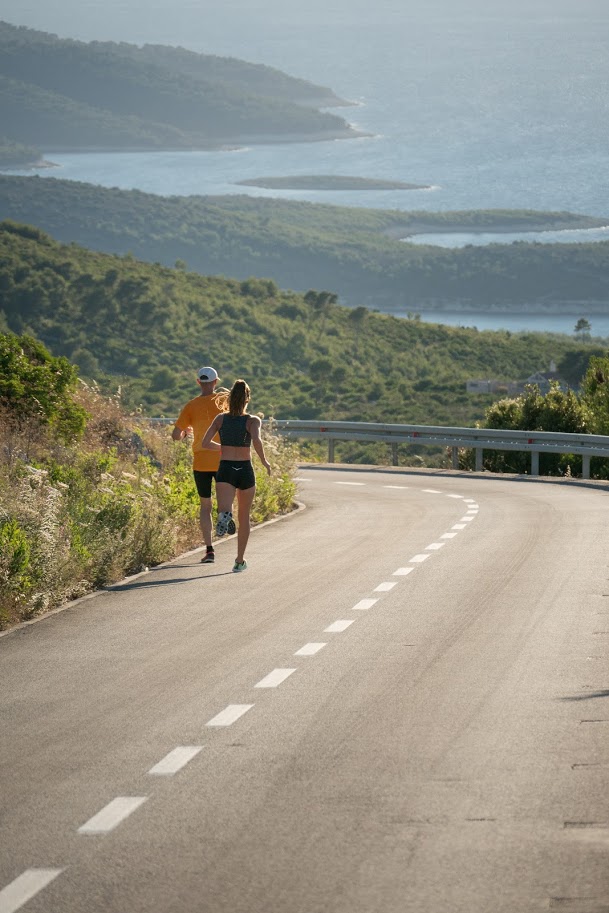
It is surely one of the most beautiful races in Europe.
Want to experience the route, without running out of breath? Sit back and relax and take in the Hvar old road in its entirety.
At least once a year when visiting Hvar, I always come back on the old road. A chance to appreciate the magnificent beauty and nature of this island on a road largely untouched for decades.
Take the new road and arrive in 20 minutes if you must, but why not instead take a whole afternoon?
For the latest travel info, bookmark our main travel info article, which is updated daily.
Read the Croatian Travel Update in your language - now available in 24 languages
Social Distancing and Nutritious Living: Why Hvar Long Stays Make Sense
September 13, 2020 - It may be better known as a summer beach destination, but Hvar long stays are looking increasingly attractive in the corona era.
As I have written before, one's perspective on the whole coronavirus crisis is heavily influenced on one's personal experience. Being locked down in the heart of New York City, with death all around, compared to life on a corona-free Dalmatian island are two completely different things.
I was fortunate to endure 63 days of idyllic lockdown on the island of Hvar, which I have to say was never more beautiful in the 19 years I had known it. There were no tourists, and with me self-isolating for a month after arriving from Varazdin, there was no contact with locals either. Just me and the island, almost devoid of people.
The sun shone, a lot, the Internet worked well, and the produce from the family field was outstanding.
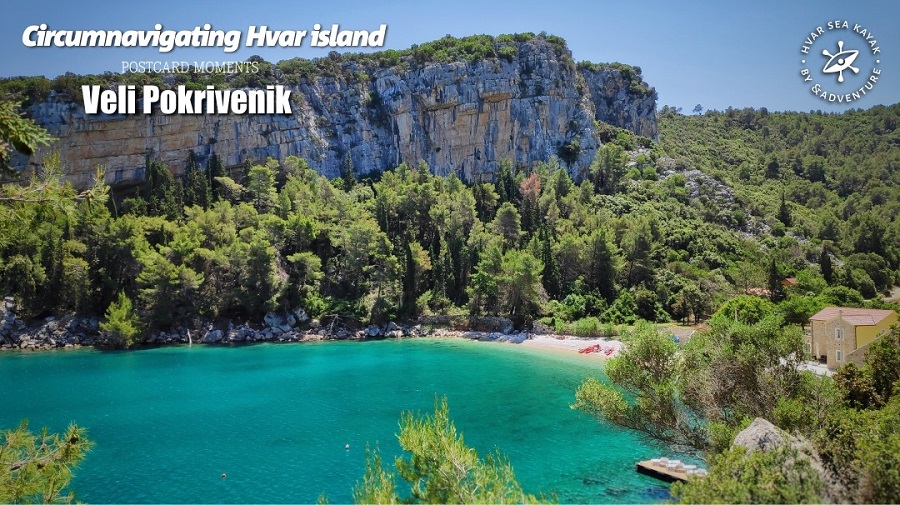
(Photo credit - Hvar Sea Kayak)
Yes, of course, the lack of cafes and restaurants, and the inability to travel to the mainland, were inconveniences, and entertainment was a little thinner than in the summer months. But when I chatted to friends all over the globe, I realised just how fortunate we were.
In the UK, for example, no chance to go to the pub or get a haircut until July 4, with social gatherings limited to two households. So claustrophobic, especially compared to Hvar where the crashing waves of the Adriatic each evening helped clear away the cobwebs of stress built up reporting daily on the global pandemic.
And now that summer is ending, and talk of a second wave and new lockdowns emerge, I look again to the magic and freedom of islands in Dalmatia. Hvar long stays make more sense than ever to me, for those with the freedom to travel and work from home. Back in the UK, meetings are now limited to just 6 people, and who knows what is coming next.
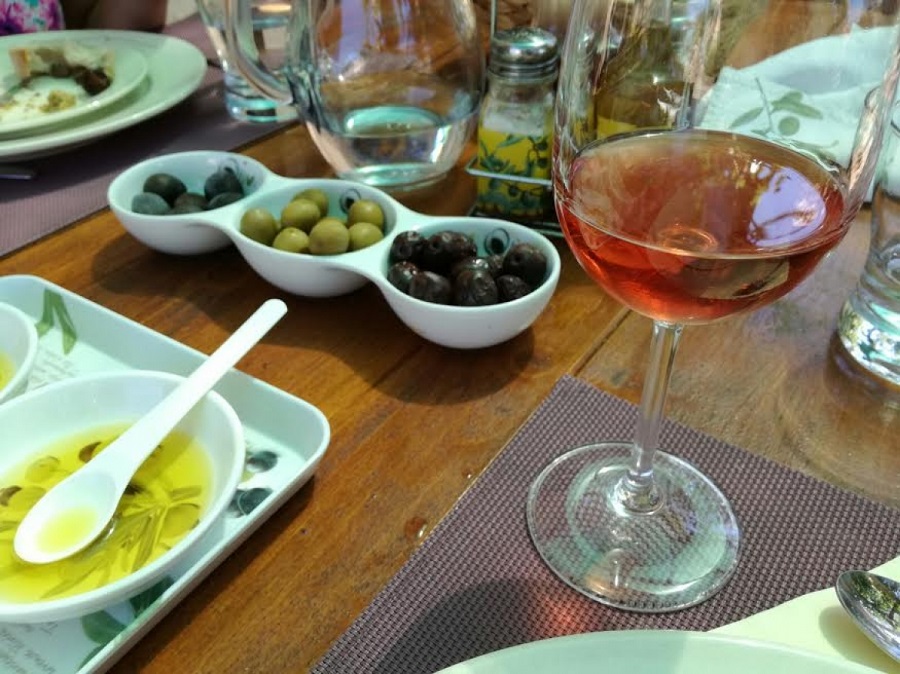
Almost 70 kilometres long and with a population of just 10,500, Hvar has a population density of just 38.5/km2, so if you are looking to social distance, you have come to the right island... But it is also an extremely healthy island, with its temperate climate. So healthy in fact, that it is known as the sunniest island in Europe, as well as the birthplace of organised tourism in Europe, with the founding of the Hvar Health Society back in 1868.
That healthy lifestyle extends to the food, and Hvar is one of 9 settlements in several countries whose Mediterranean Diet was inscribed as intangible UNESCO heritage back in 2013. I certainly cannot recall living in a place where the local ingredients were so healthy or flavoursome. I have become an olive oil addict over the years, and nothing quite beats plucking a lemon from the tree for that evening gin and tonic on the terrace.
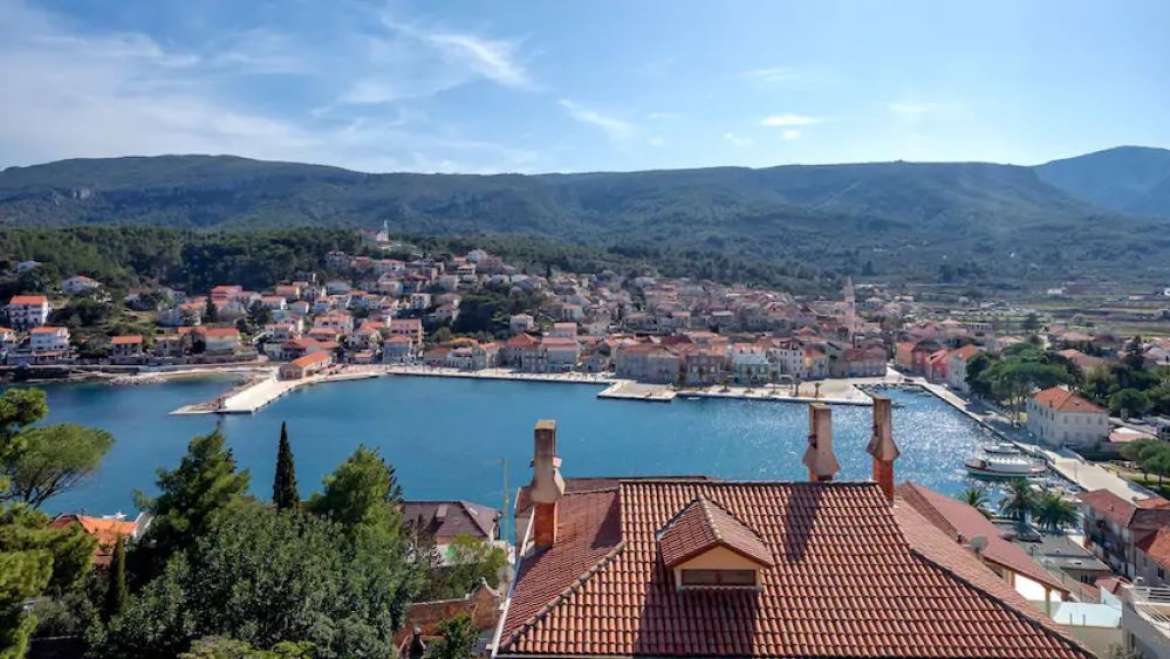
Tourism on Hvar was actually centred on winter tourism 150 years ago, that wonderful healing temperate climate a key attraction. The Austrian Madeira was how the island was called. It will take significant effort to make Hvar a significant winter destination again, but for those looking to get away to somewhere a little more remote (but just two hours by ferry from Split), a clean and healthy environment, both with food and nature, it is well worth exploring. The season is now more of less over, and so too are seasonal prices. The price of Hvar long stays out fo season are infinitely more reasonable, and what better way to start the day than with the sun streaming in through the windows, followed by coffee on the terrace?
It certainly beats lockdown in a city.
Learn more in As Tourists Leave Croatia, the Case for an Extended Autumn Stay on Hvar.
The Jewels of Hvar Town: A Guide to the Paklinski, Pakleni Islands
September 12, 2020 - Have you ever visited Paradise? Take a tour with a closer look at the Pakleni Islands which lie invitingly in front of Hvar Town.
The debates start with the name. Is it Paklinski or can you call them the Pakleni Islands?
Do they translate as Hellish Islands (in which case, I wonder what real Hell looks like...) or do they take their name from the archaic word 'paklina', which means 'tar' and refers to the pine resin which was used to coat ships?
And the biggest debate of them all - which is the best of the Pakleni Islands?
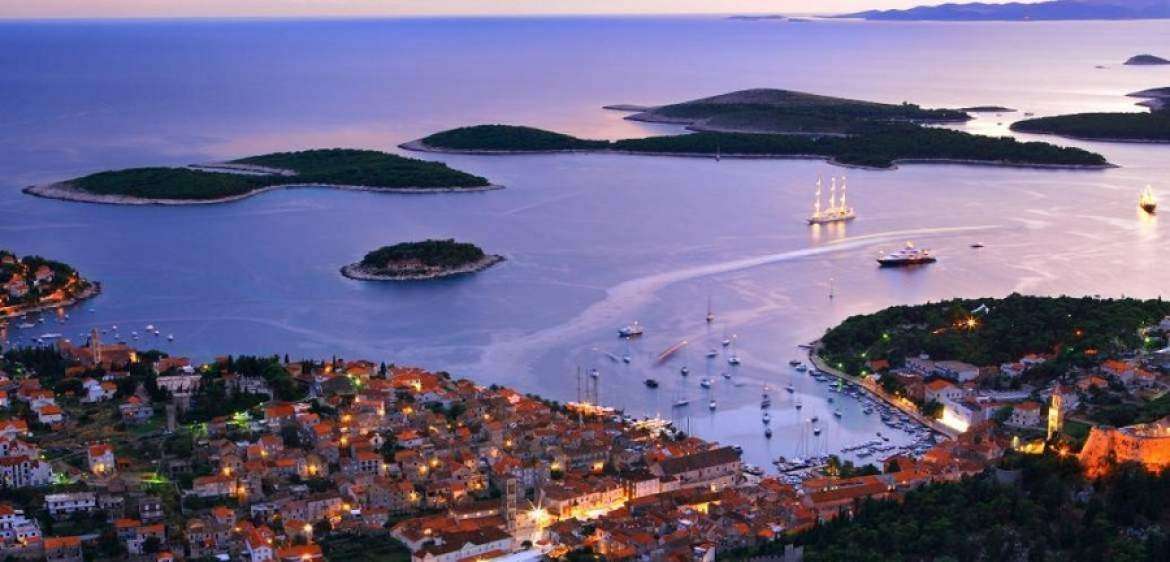
As if Hvar Town did not have enough of its own - a stunning Venetian town, the oldest public theatre in Europe, the birthplace of organised tourism in Europe, the imposing Spanish Fortress, and a whole host of treasures in its alleys and main square, Croatia's most famous island town is also blessed with 16 magical islands located in front of its impressive elite waterfront, waiting for visitors to discover. The Pakleni Islands are a natural extension of the town itself and an essential part of any Hvar visit. Several are easily accessible to regular and affordable water taxis. But while some of the 16 Pakleni Islands are bigger than others, they more or less look the same. Are they? Absolutely not!
Here's a closer look at one of the most idyllic parts of the Adriatic Sea - which island will be your first choice on your next visit?
Sveti Klement (Palmizana)
The combined area of the 16 islands is 7.16 km2, most of which (5.27 km2) is located on the biggest island of them all, Sveti Klement. Also known as Veli Otok (Big Island) and Palmizana by some, Sveti Klement is the most popular destination, with plenty of diverse - and unusual - attractions on offer.
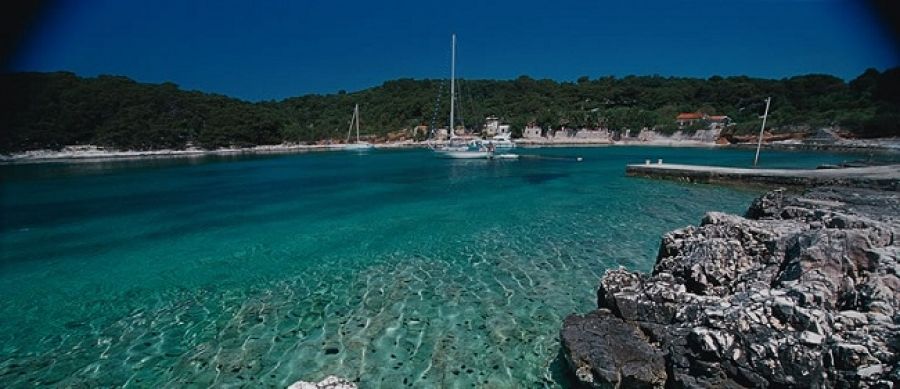
It was here in a southern bay called Vinogradisce (but more commonly referred to as Palmizana) where tourism began back in 1906, when local landowner Eugen Meneghello opened his villa to tourists. More than 100 years later, the Meneghello name has become synonymous with high-quality Hvar tourism, a relaxed shelter from the paparazzi for many A-list celebrities, as well as one of the most interesting places to visit on the Adriatic. Today, Dagmar Meneghello continues the tourism tradition started by her grandfather-in-law, and she has dedicated more than half a century of life to build one of the Adriatic's most inspiring places. In addition to her Meneghellos restaurant and luxury accommodation, and nearby Toto's run by her son Djenko, the Meneghello complex is a place of high culture, which its own art gallery, rich cultural programme, even an arboretum. A natural paradise where turtles and peacocks room.

Vinogradisce is a spectacular bay and the best place to head to for restaurant choice. From fashionable Zori's in the centre - one of Hvar's top wedding locations - to more rustic fare among the impressive olive trees at Bacchus, to Laganini - cocktail bar turned top fish restaurant under the innovative culinary creations of Hrvoje Zirojevic. So good in fact, that U2's Bono shared his appreciation of a 10-course extravaganza on the official U2 page before returning the following year.

Tourism actually began on Sveti Klement almost 2,000 years before, as one can discover on a visit to Vlaka (Vloka, say the locals) on the island's northern shore, also accessible by regular water taxi in season. For here, in this tiny hamlet with the only full-time Pakleni resident, one can find the remains of a Roman villa rustica, as well as a bay which still has some of the healing mud which made it so attractive. It is also home to Dioniz,a slow-food rustic experience which many locals will tell you is the best in the area. Wine lover? Meet the lowest vineyard in Croatia, just 1m above sea level, which was until recently the grape source for the popular Andro Tomic Sveti Klement white wine.
Sveti Klement is also a haven for sailors, being home to the main ACI marina for Hvar (there is another in Vrboska). The marina is the connecting point for the water taxis to the restaurants on the southern side, a very pleasant 200 metre walk through the pine trees until you are presented with your choice of paths to each of the five restaurants.
Marinkovac (Stipanska)

(Photo credit Romulic & Stojcic)
The second biggest island also suffers from something of an identity crisis, with perhaps the majority of its visitors not even knowing the island's name. That is because the island of Marinkovac is better known for some of the Adriatic's most high-profile nightlife, which takes place in the bay of Stipanska, home of Carpe Diem Beach. Carpe Diem, which has been one of the main brands of Hvar since its arrival 20 years ago, operates a bar on the Hvar riva, as well as a popular beach club by day and one of the Adriatic's hottest nightspots after dark.
And yet... Head to the other side of the island by water taxi to idyllic bays such as Zdrilca and Mlini, and experience a tranquillity and slow-paced Dalmatian lifestyle and excellent local cuisine in top restaurants such as Tri Grede and Patak.
Jerolim
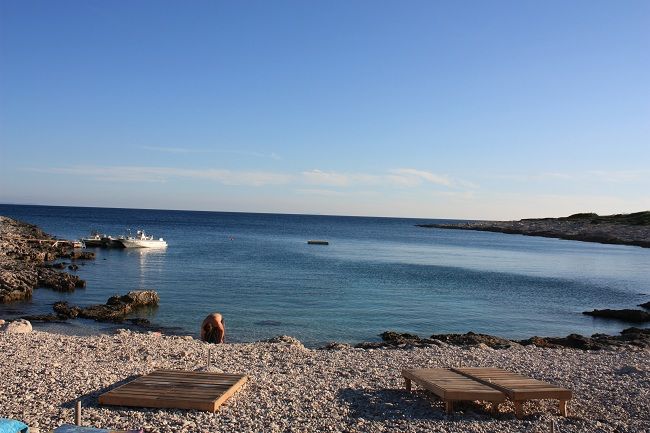
Much smaller, as well as one of the closest by water taxi, is the island of Jerolim, a naturist and chill paradise. Such a paradise, in fact, that it was named by CNN as the world's number one naturist beach back in 2011. The island is not just for naturists, however, but for those who just want to chill. It also has a reputation for being gay-friendly. One of the most relaxing spots on the Pakleni Islands is at Mare's Place, on the other side of the island. From the water taxi, head to the left of the restaurant there and walk through the woods for less than 100 metres - the thinnest point of the island. Here is magical Kordovon Bay, sometime photoshoot location for the likes of Vogue Magazine, but always overseen by wonderful hostess Mare. One of my personal favourite spots in Dalmatia.
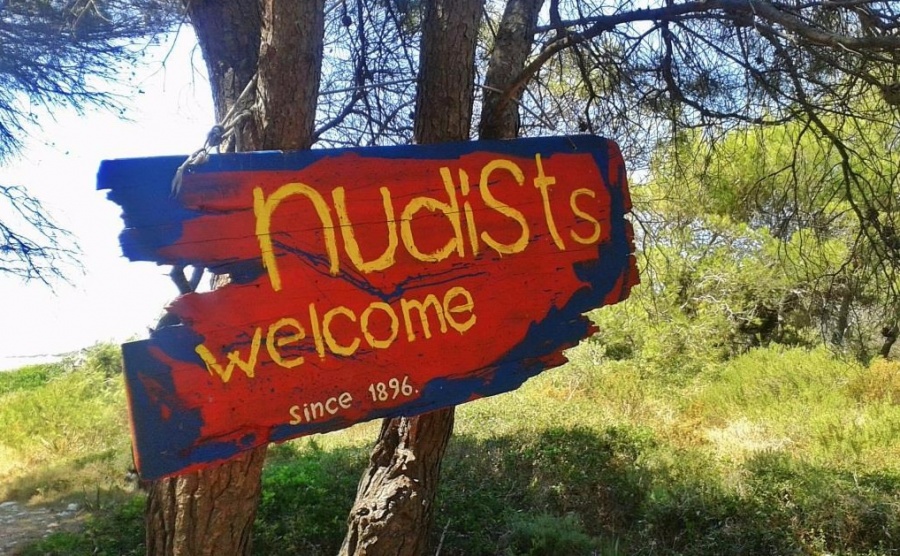
Galesnik
The closest island to Hvar Town is Galesnik, a divine spot which also has a most romantic story about donkeys. As with all but one of the Pakleni Islands, Galesnik is uninhabited by humans, but until a few years ago, it had rather a famous resident - a donkey named Mercedes. Although I never actually met Mercedes, she starred on the cover of my book, Lavender, Dormice and a Donkey Named Mercedes - An Expat Decade on Hvar. For years, Mercedes was the only permanent resident of Galesnik, and she was partial to the odd rakija from the local restaurant. But life was very solitary until one day about 6 years ago, an Englishman decided to answer his girlfriend's concern that donkeys are not meant to live alone by buying a male donkey companion and transporting it to Galesnik for a new life with Mercedes. All was well for a short while, but the new company seemed to wear out poor Mercedes, and she is sadly no more.
Donkeys aside, Galesnik has an excellent eco-ethno restaurant in the low-level stone building facing the town - one of the very best views, especially when combined with the excellent food. The building has previously been used as an arsenal and quarantine station, and its latest use is definitely an upgrade. To book the restaurant and arrange transport to Galesnik, ask at the Port Authority on the riva close to where the catamaran comes in.

Pokonii Dol
While most tourists head to the Pakleni Islands for their beach time, there is an exception - the easternmost island of them all, Pokonji Dol. One of the most photographed things on Hvar due to its picturesque lighthouse in the middle of the small islet, the island lies in front of one of Hvar Town's most popular beach spots, a bay of the same name. The lighthouse, built in 1872, has played an important role in guiding shipping through the islands since its construction, but it was powerless to stop a luxury yacht which ran aground a couple of metres from the beach a few years ago. Take a look.
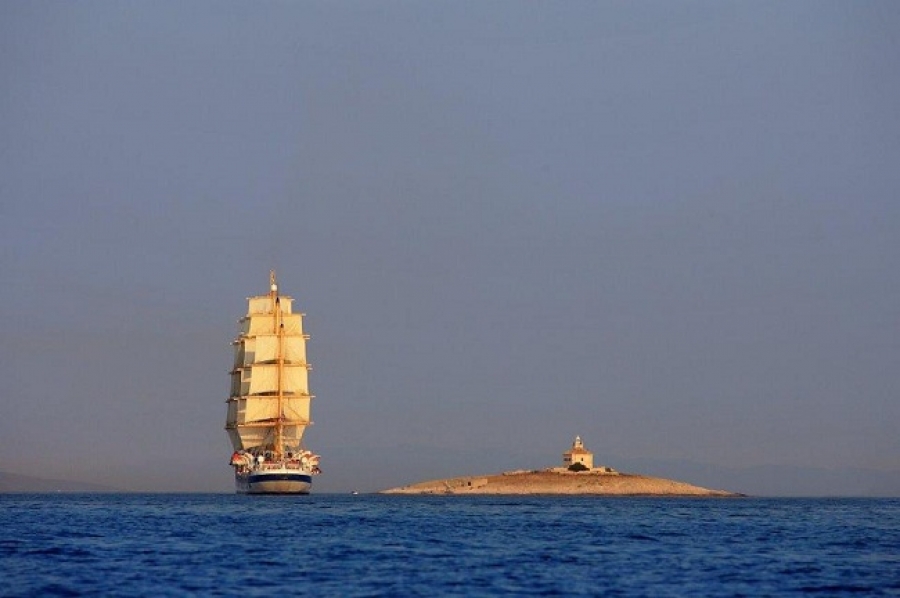
(Photo credit Romulic & Stojcic)
There are 16 islands in all, and we have covered the five most important ones above. It would not be correct to reveal all the secrets, as then there would be nothing to discover. The Pakleni Islands are a sailing and kayaking paradise if the water-taxi or speedboat transfer option is not for you. Nice little tours such as the half-day sailing and kayaking sunset tours.
Some people call them the Hellish Islands. I can't think of many better versions of Paradise.

(Photo credit Romulic & Stojcic)
For the latest travel info, bookmark our main travel info article, which is updated daily.
Read the Croatian Travel Update in your language - now available in 24 languages
Wine Stars Light the Way for Croatian Wine Lovers
September 6, 2020 - English-speaking lovers of Croatian wine may find it a challenge to locate the types of wine scores and quality ratings that seem to saturate the rest of the wine world. Programs for wine evaluation do exist in Croatia—the first of them was Vinske Zvijezde, or Wine Stars, launched in 2013. This writer helped judge a recent Vinske Zvijezde competition on Hvar to see how the program works, and reveal the top Bogdanuša, Bogdanuša blends and Plavac Mali on the island.
Each year, Vinske Zvijezde evaluates about 200 wines in small tastings. The judges, all volunteers, are enologists, sommeliers, wine journalists, and people in the wine trade. Judges are aware only of the category of wine being tasted, the vintage and the level of alcohol, and are responsible for scoring the wines for their appearance, aroma and flavor, with the most points awarded for “quality” of aroma and flavor. The judges’ scores are averaged to arrive at the final score for each wine.
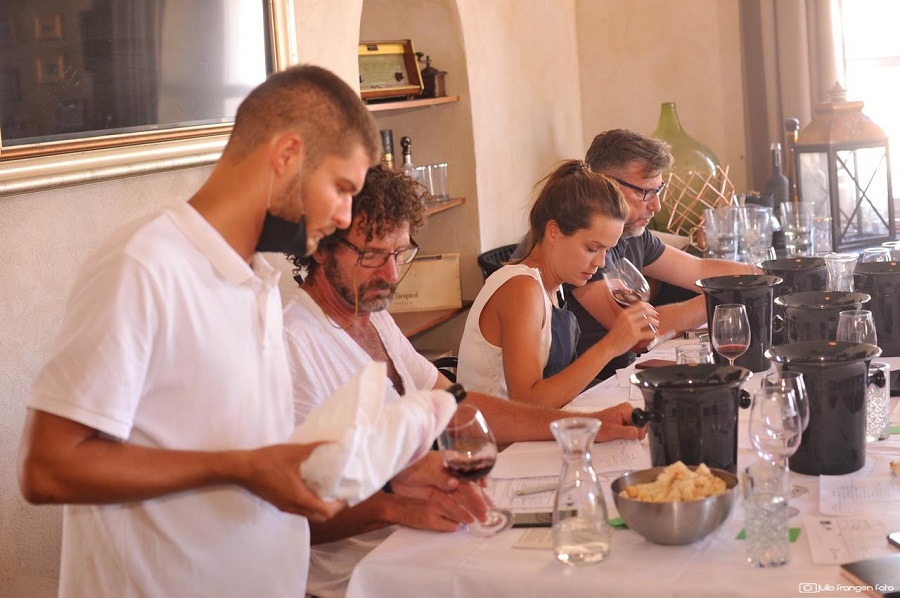
(The next sample is poured for judges (from left) Miro Štec, Eva Krištof and Saša Zec. Photo: Julio Frangen)
The key to Vinske Zvijezde is that the competition is open to all wines on the market in Croatia. It is intended “to present the wines that a customer can find in a wine shop,” according to co-organizer Marija Vukelić of Zlatne Riječi, a wine promotion firm in Zagreb. Saša Zec, an enologist and sales and marketing specialist who organizes the tastings with Vukelić, emphasizes, “We don’t depend on any wine producer here in Croatia. Most important is that we are independent and earnest.” Enologist Eva Krištof participated simply “because I love Hvar and Hvar wines.” A former Hvar resident, she brings a keen local wine knowledge to the judging.
The results of each tasting are announced (in Croatian) on the organization’s Facebook page. Wines with scores of 90-100 points are presented with award certificates at a ceremony at the end of the year. Last year’s presentation was at the Vino.com wine festival in Zagreb.
Vinske Zvijezde was founded by three wine journalists—Vitomir Andrić of Večernji list newspaper (retired); Ivo Kozarčanin, an editor at 24sata newspaper; and Željko Suhadolnik, editor-in-chief of Svijet u čaši magazine. Svijet u čaši was the first wine magazine in Croatia, and the first to include ratings.
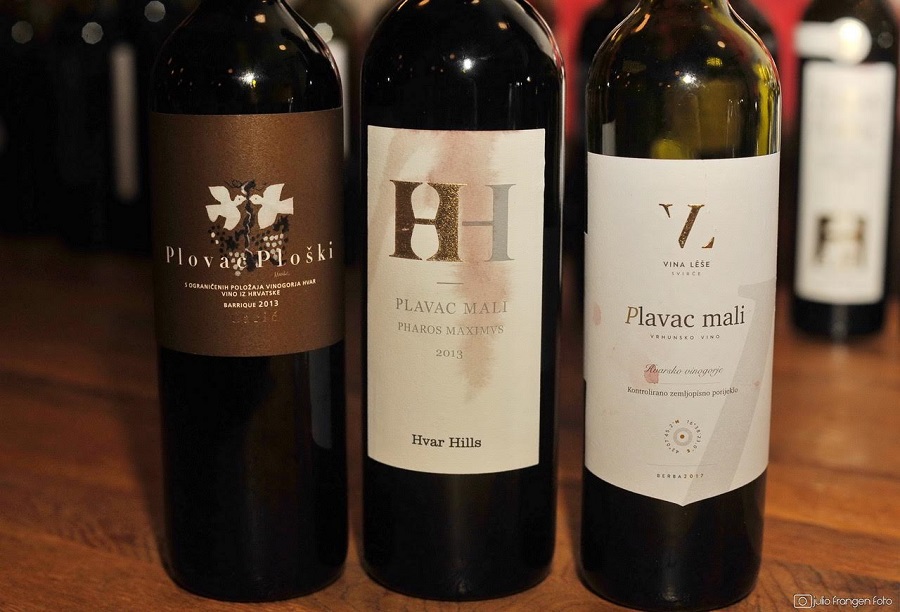
The top-scoring wines of the tasting of August 29 in Jelsa:
Bogdanuša (from 6 submissions)
- Pavičić Vina 2019 (48kn)
- Vina Carić 2019 (50kn)
- Zlatan Otok 2019 (50kn)
Bogdanuša blend (from 6 submissions)
- Zlatan Otok Cuvée 2018 (50kn)
- Vina Carić Cesarica 2019 (55kn)
- Tomić Beleca 2019 (70kn)
Plavac Mali (from 20 submissions)
- Vina Carić Plovac Ploški Barrique 2013 (130kn)
- Hvar Hills Pharos Maximus 2013 (200kn)
- Vina Leše Plavac Mali 2017 (60kn)
Croatia, Full of Poisoned Cats? The Dark Side of Dalmatia's Streets
September 3, 2020 - “Croatia, Full of Life!” says the national tourist board, but are they aware of all of the poisoned cats? A closer look at the animal issue plaguing Dalmatia's streets.
Street cats have become a symbol of Croatia, and whether you find them fishing on the coast, in bins, or enjoying a bit of ‘fjaka’ on an ancient stone wall, you’ll be hard-pressed to miss one while you're here.
But there is a dark side to our furry friends in Dalmatia, something I could never imagine in a place of so much beauty. Cat poisonings.
Growing up in California, my family always had cats. Because we lived on acres of citrus and avocado trees, we'd often wake up to litters in our shed or on top of our cars before I was driven to school. While we found homes for some, we raised others and ensured they were part of our family. Some we had for over 15 years, and all had passed before we moved to Croatia.
Without the responsibility of house pets for the first time in years, the thought of adopting an animal here hardly crossed my mind. And to be honest, I went four years in Split without taking any in. That is, until a kitten drove under our car for 20 minutes before falling out in the middle of the highway, which I heard only thanks to a hunch in my gut that something wasn't right. Suzy drove home with us that day and became my first kitten love in Croatia. Just over two months later, a 3-week old kitten was abandoned by its mother on a rainy Sunday night near my home, and while I tried finding him a forever home, Ziggy became a Rogulj, too. And that’s only the beginning.
However, it wasn’t until I rescued Ziggy that I became wholly exposed to the depths of the cat community in Split and Dalmatia. While I had friends actively involved on the streets or Facebook, I was often hesitant to join for fear of uncovering its somber side. Part of me enjoyed being blissfully unaware, thinking that the street cats here are healthy, happy, and have homes, as many people want you to believe. Unfortunately, it’s far worse than I’d ever imagined - and for anyone with the slightest bit of compassion, impossible to turn your head.
Not only do cities seldom help in sponsoring sterilizations for street cats (there are a few exceptions, like Stari Grad, which I will go into later), but many citizens believe that cats are pests, and pests must go before the tourists arrive. This is where the act of poisoning comes in.
At the beginning of August, Jutarnji List reported on 17 cats that were either poisoned, beaten, or drowned on the island of Hvar in a matter of weeks, terrifying tourists who left their accommodation because they found a dead cat in the courtyard. They added that dog owners were scared to leave their homes, and parents were hesitant to take their children to playgrounds for fear of them coming across traces of poison. The poison used, they said, was potent, and nothing anyone, let alone a cat, should come into contact with.
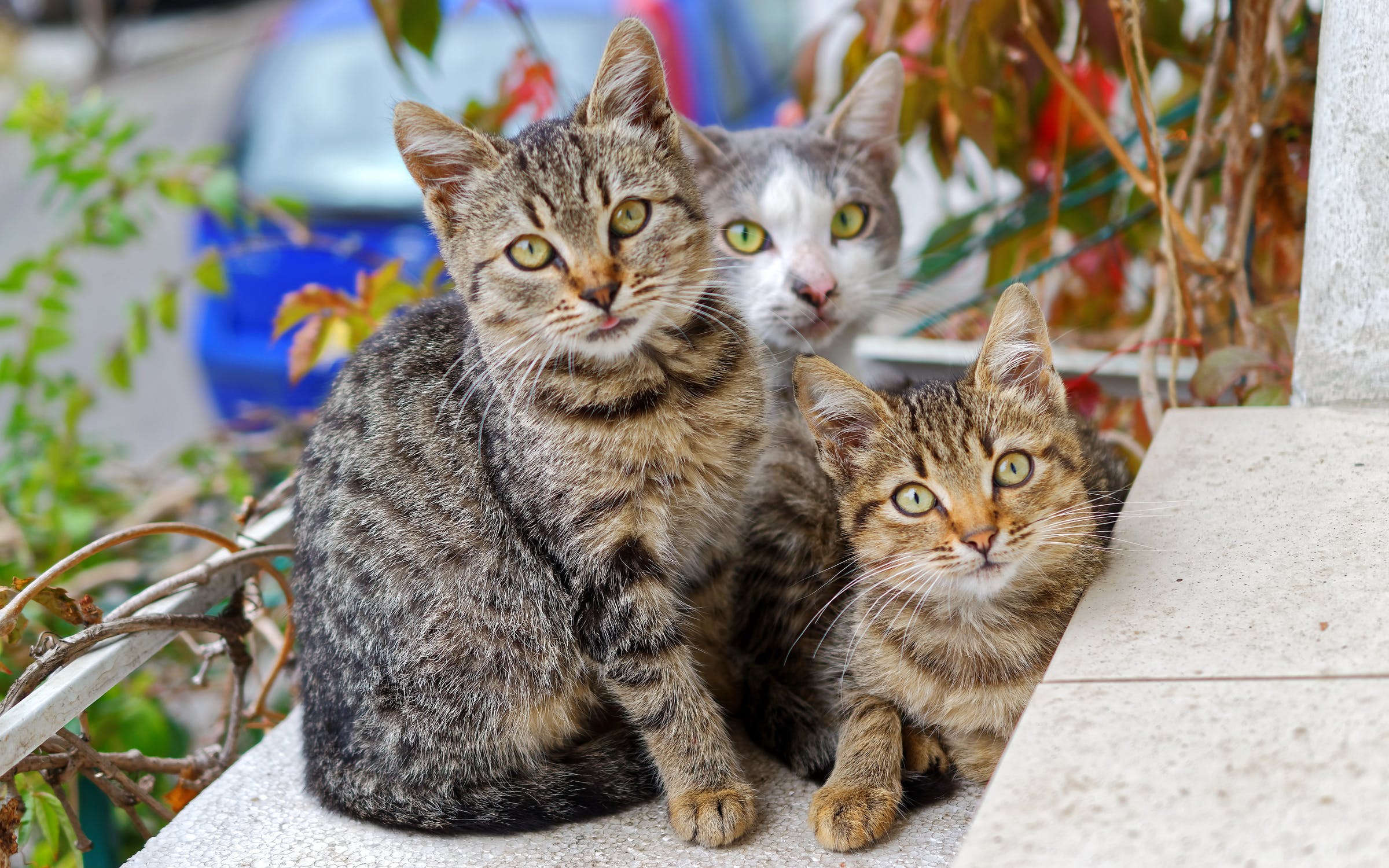
Pexels
Hvar, however, is only one example. Kelly Parslow, an ex-pat who has lived in the village of Osibova on Brac for years, has lost eight cats to poisonings.
“I believed foolishly that the first time it was an accidental poisoning. I was aware that cats were often poisoned here, and a colony of street cats that I cared for was wiped out by poison a few years before. But I couldn’t believe that my neighbours would deliberately harm MY cats. I was very wrong,” said Parslow.
Kelly first realized two of her cats went missing while she was caring for another she found foaming at the mouth.
“Both of these cats came to me as unwanted kittens, left at my house during the night by people with unsterilized house cats, who were allowed to roam freely, and ended up pregnant. Before I moved here, the unwanted kittens would be left at the neighbourhood rubbish bins, and kind-hearted locals would feed them until they were inevitably poisoned, to “clean” ahead of the tourist season. Then word spread of the crazy foreigner who loves cats, and soon, the kittens were turning up at my home. I didn’t mind, though. I have enough space at home and in my heart for these poor creatures. I believed they would be safe with me. My home is surrounded by forest and sea. Osibova is a neighbourhood of vikendice and apartmani. I am one of only a few year-round residents. The neighbours who come in summer love my cats. Children often come to feed and play with them. A retired couple even adopted one particularly friendly cat. They were not previously “cat people,” but my sweet girl converted them, and they adore her completely!”
And the poisonings didn’t stop there.
“With the third victim, I realised that this was no accidental poisoning. My cats were deliberately killed. People told me it was probably hunters who leave poison in the forest for reasons I don’t entirely understand. Reports of more poisoned creatures started pouring in. Two puppies, many kune, and even owls. Who knows how many other creatures were carelessly slaughtered. That’s the thing with such a poison. It doesn’t only kill the targeted animal. It passes through the entire food chain, killing big and small creatures and contaminating the environment. It never disappears, it slowly dissipates but not before causing untold damage to the delicate ecosystem,” Kelly said.
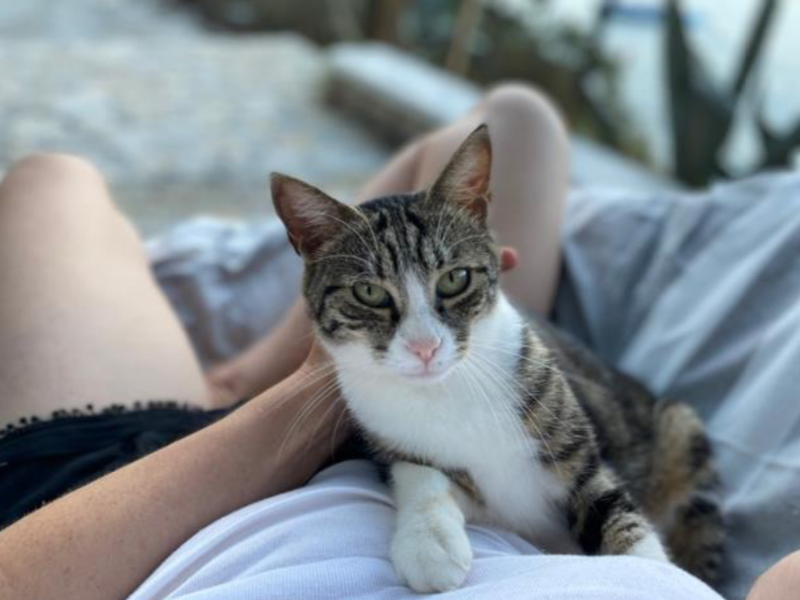
A week later, she found the fourth victim, Tootsi.
“He was a refugee from Milna, his clipped ear a sign that he had been one of many cats sterilized in a large ‘Trap Neuter Return’ effort, carried out by volunteers and paid for by the Municipality. He had only one eye, the other most likely shot with an air rifle, in some twisted version of target practice for hunters. Despite all this, he was sweet, friendly, and grateful for my care and affection. I found him under a bush, foaming at the mouth, crying in pain and fear. Again I rushed to the vet, but he was dead by the time I arrived.”
Kelly resolved to building a cat-proof fence on her property to protect her remaining cats, though work cannot begin until after the tourist season as building work is prohibited.
“At the same time, 2 cats disappeared. I never found their bodies. The death toll stood at 5. I thought that the opening of the tourist season would protect the remaining cats. Surely no one would drop poison around when so many people with young children and dogs were here enjoying their summer holiday! I underestimated the stupidity and savagery of the culprits.
Last week, I heard that more cats had been poisoned in Osibova. Orphaned kittens were found, some dead, some clinging to life. Three of my cats were missing.
I searched the neighbourhood for days until I found the body of my beloved Turtle. She crawled under the wooden kučica for cats that I built in my garden. There she died the same painful, terrifying death as the others.”
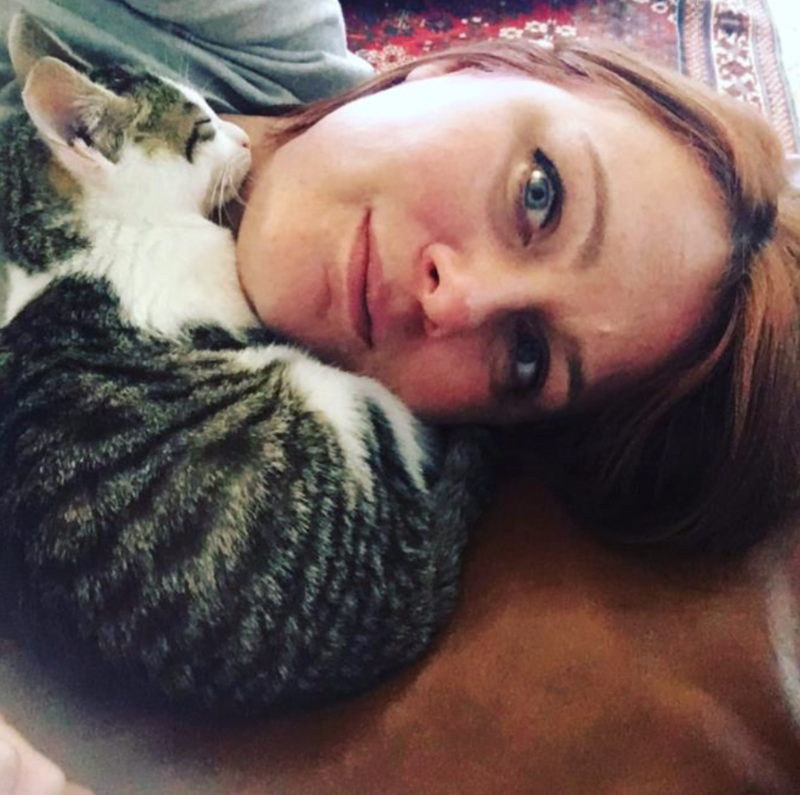
Shocked by Kelly's experience, I decided to take a poll of my Facebook friends to see who else has witnessed something similar. The situation in Slatine on Ciovo is no better.
"I would like to draw your attention to Slatine (Ciovo), where such a practice is repeated from year to year, on a much larger scale (although almost unknown to the general public). This year alone, already three times, dozens of cats have been poisoned. Non-selective poisoning, in public places, without warning and notice (and permission), which endangers both children and other pets. The motive is simple, out of season, cats are desirable because they 'control pests and snakes' everyone feeds them and lets them reproduce uncontrollably, and in season, they are 'enemy number 1 because tourists come,' and Slatine residents have no urge to keep the place clean, so cats gather in crowded containers in groups of up to 30," reads one message I received on Facebook. The source added that Slatine is officially part of the City of Split, and the Split district, which makes the story even crazier.
Unfortunately, it is known in the community that the police rarely act on reports of cat poisonings.
“Cat poisonings are amongst the major issues when it comes to animal welfare in Dalmatia. These atrocities happen regularly throughout the year, the work of psychopaths who go unpunished, with a big spike during the spring and summer months. The reason is that many accommodation and restaurant owners are convinced they need to 'clean the place of cats' so they don't bother tourists. This makes no sense whatsoever, given that the visitors love cats and seem to show a lot more empathy for them than most locals. Our association has reported dozens of cases to the police, but it is never taken seriously, and often, we are even laughed off. The authorities don't seem to think cats' lives are worth their time and resources,” said Tanja Vukicevic of the Split association Deseti Zivot.
Zdravko Podolski, a resident of Vrboska on the island of Hvar, has lost three cats to poisonings, oftentimes with no luck from the police - but that shouldn't discourage people from reporting.
"Always report, to grad/opcina, to police, to komunalno redarstvo, to drustvo za zastitu zivotinja. From the police, insist on a case number. If you have suspicions, share them. Nothing will happen the first few (or even many) times, but you can ask for a report, and you can set the press to ask," he says. Printing out articles in the media about poisonings and placing them in the mailboxes of suspects could work, too.
Parslow believes that if several people report the same crime, the police can do their job.
“People say the same thing to me over and over: don’t bother to report it because the police don’t care. This is not true at all. In my experience, the police care a lot and are always sympathetic. They can’t do anything if they don’t know the crimes are happening. By not reporting, people ensure that nothing will continue to happen. I always report to the police and the local municipality, but one report is not enough! If several people report the same crime, then there is more information for the police to work with. That is what happened in this case. The police told me that several other people had reported the same incidents of poisoning. Putting all the reports together gives the police a better picture of what is happening. Every piece of information, however tiny, is a piece of the jigsaw puzzle that can lead to prosecution.
There are several different routes to prosecution. An autopsy and toxicology analysis can be performed by the police crime laboratory, but it is very expensive, and citizens are usually expected to pay for it themselves. The poison itself is prohibited in Croatia and must be brought in from neighbouring countries with more relaxed laws. Anyone found in possession of the substance can be prosecuted. Offenders can be caught on video surveillance cameras, and some are even stupid enough to brag about their crimes, effectively confessing their guilt. I urge all concerned citizens to report these crimes. It takes a tiny amount of effort, and you might not see results immediately, but it is worth it.”

Pexels
I was shocked to discover just how many locals are unaware of what to do if they come across poisoned cats. One message last week from a local university student in the Visoka neighborhood of Split is an example.
"Someone in my street is poisoning cats, and I don't know what to do. I'm so sad about it because three already died."
According to Animal Friends in Croatia, if you are to witness an imminent threat to the health and life of an animal and severe abuse of an animal (including all forms of physical abuse), you are to call 192 and request the intervention of the police to prevent further endangerment of the animal and, if it is torture and/or killing the animal, file a criminal report.
A criminal report for abuse and/or killing of an animal should also be submitted by a witness of abuse/killing of an animal or a person who has information about it, in writing to the competent Municipal State Attorney's Office for violation of Article 205 of the Criminal Code. You can read more about it HERE.
Last week, a 61-year-old woman on the island of Hvar was caught by police for poisoning four cats. Some justice, finally, has been served.
“The people of Hvar are finally relieved: after a police investigation, the case of poisoning and killing cats, which had been buzzing in the news for days, was resolved. Allegedly, some tourists decided to leave Hvar after they came across the corpse of a cat in the yard of the apartment where they were staying, which horrified them so much that they packed up and left.
Although several killed cats were found in the town of Hvar in July, in yards and even in a net at sea, Hvar Police Station officers found that a 61-year-old woman from Hvar had killed four cats, which led to a report of the crime of killing or torturing animals. The competent state attorney's office was informed about the completion of the criminal investigation in a special report, as a supplement to the previously submitted criminal reports,” reads Slobodna Dalmacija’s release on the police report.
Killing or torturing animals in Croatia can see you imprisoned for up to a year.
Vivian Grisogono of Eco Hvar, an association helping to improve the health, environment, and conditions for animals on Hvar Island and beyond, suggests a way forward.
“One has to recognise why there's a problem and the valid reasons why some people object to having cats around their property. And then one can work out solutions, at least to some degree. Firstly, we feel that feeding stations with soil or sand areas for toileting would be a good start. Zagreb apparently has 40 of these. Such feeding points would make it easier to organise the sterilization of strays. Secondly, a satellite shelter (stacionar) would be excellent. One of our members has offered the use of some private land for this purpose, so we are now planning to create a satellite shelter under the aegis of the Animalis Centrum/Zaklada za zaštitu životinja Beštie) shelter in Kaštel Sućurac. It's quite a big undertaking, but is desperately needed.
Getting local authority support for these initiatives, including financial, would be the best possible positive result out of the tragic events of the last few months. Stari Grad, Hvar, and Jelsa have already taken positive action in financing cat sterilizations from their budgets, which was a big step forward, and is due to the initiative of Amanda Blanch and Chris Edwardes, who run the Hidden House Hotel in Stari Grad.
Restaurants and hotels would do well to join in the initiative - it would be good for their image, would help keep local cats under control, and would definitely please the many guests who come here and enjoy having cats around. Also, the cats are, of course, useful in controlling snakes and vermin.”
Amanda Blanch of the Stari Grad Kitten Fund believes we need to use the recent media attention to our advantage to keep the momentum around the issue going.
"There is momentum after the awful killings and torturing of cats in Hvar Town, and finally someone has been arrested. I have never gotten anywhere with the police or authorities on this, but they did finally listen about the Stari Grad Kitten Fund, and after three or more hard years, the mayor did put some money into the sterilization program. It is starting to get traction, and we must keep fighting for change and show people the benefits for them. Tourists prefer not to find dead or dying cats around, and there aren't as many cat feces around our area as the sterilization program worked, as we had fewer cats, mice, and snakes."
While Parslow has grieved eight lives this year, she fears that death could extend beyond cats, and tourism doomed on the island forever.
“The poison, in this case, is a powerful neurotoxin, which usually kills in minutes. It is extremely dangerous to all life, including humans. I fear that if this is allowed to continue, one day, a small child will be killed. Toddlers explore their world by putting things in their mouths. Imagine if the child of a tourist is poisoned in beautiful Osibova. Tourism would be destroyed here forever.
People say it’s the older generation who poison cats. They don’t know and can’t afford any other way of controlling the cat population. This is not always the case and certainly not the case here. The culprits are not old, they are not even from Milna. They are property owners who make a lot of money from tourism. They will destroy anything which gets in the way of their profit. They don’t understand that tourists from other countries do care about animal welfare and would be horrified to learn that cats are tortured and killed for their benefit. They don’t care about the very thing which draws those tourists: the incredible natural beauty of this region.”
If you'd like to get involved by helping the animal associations of Croatia, follow TCN's dedicated page.
For the latest travel info, bookmark our main travel info article, which is updated daily.
Read the Croatian Travel Update in your language - now available in 24 languages


